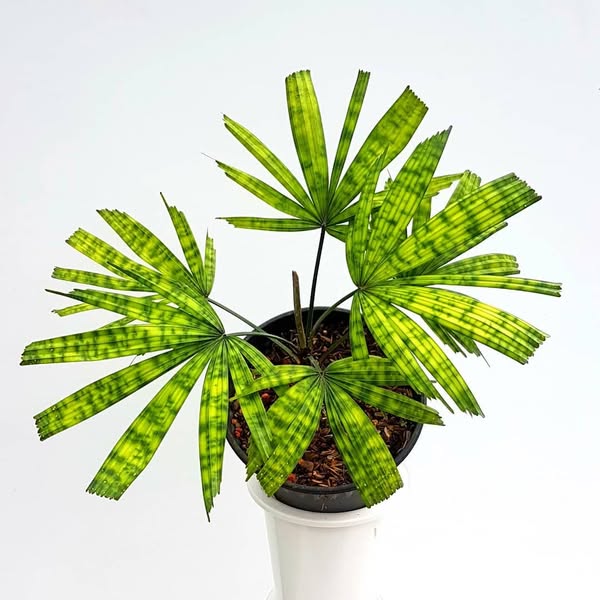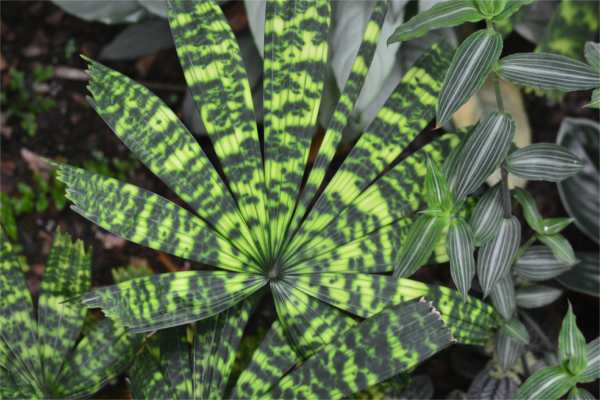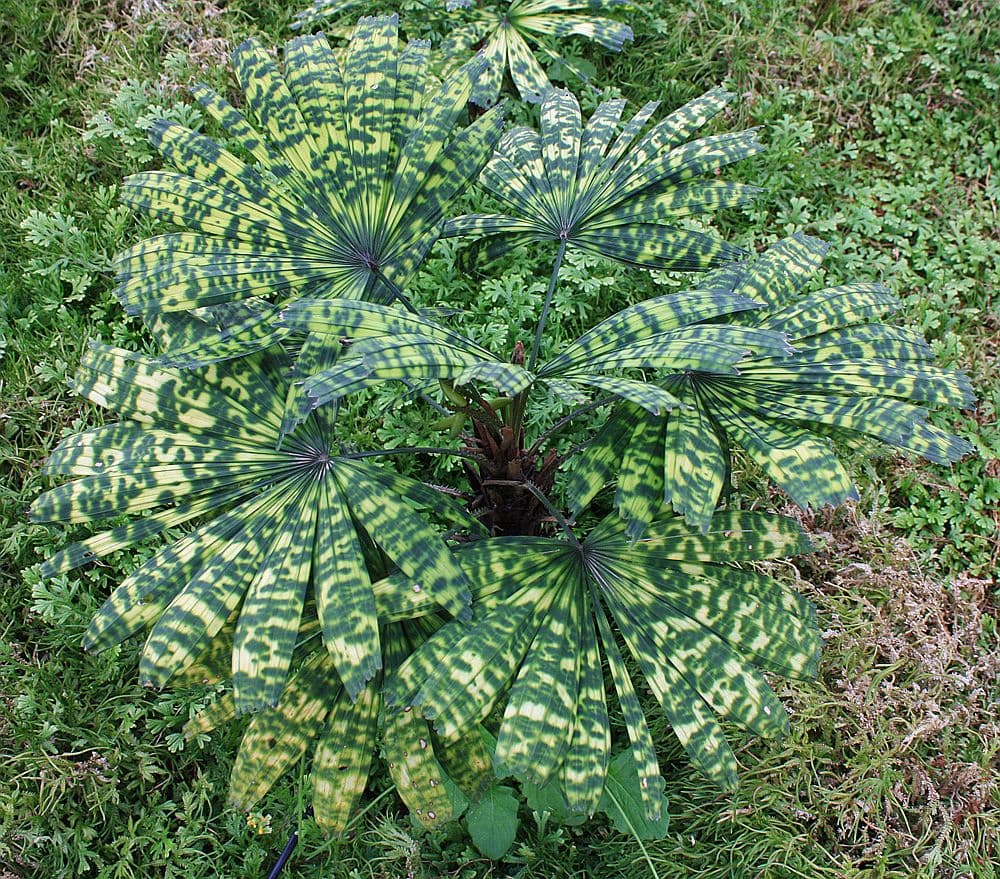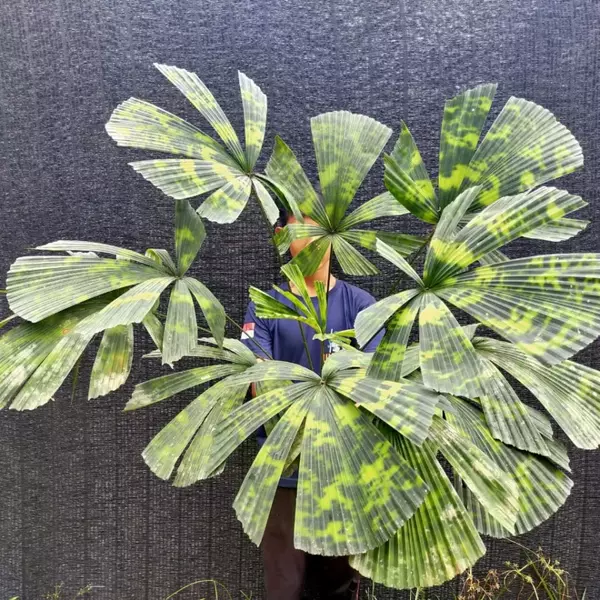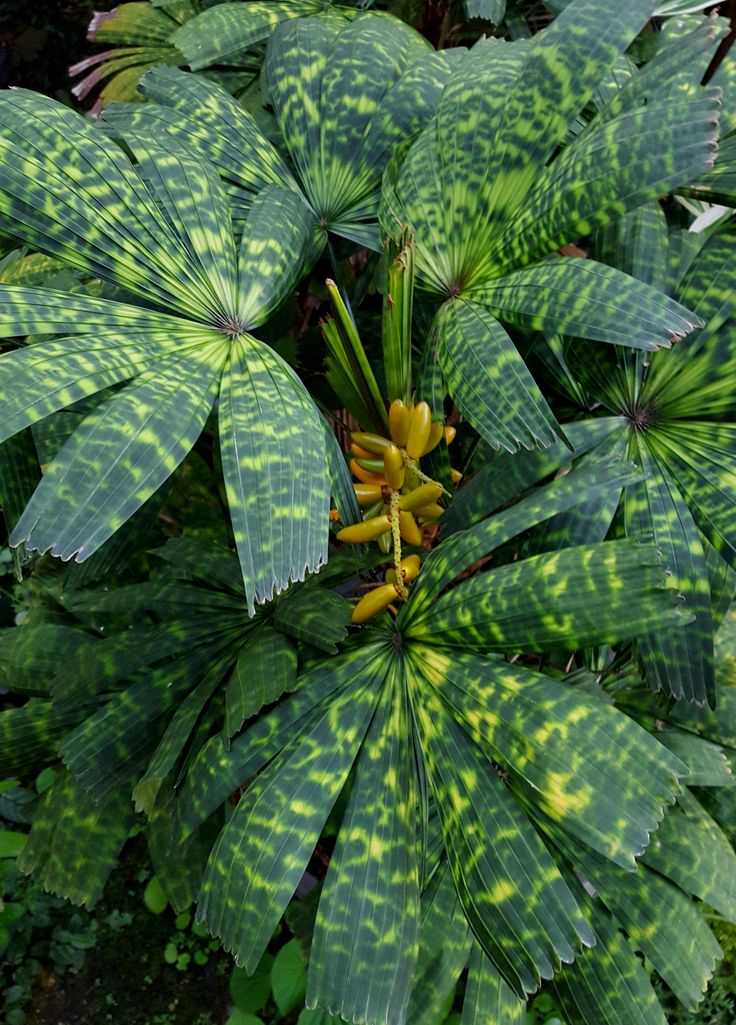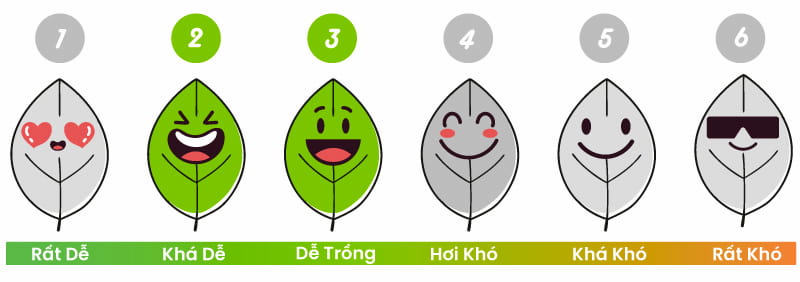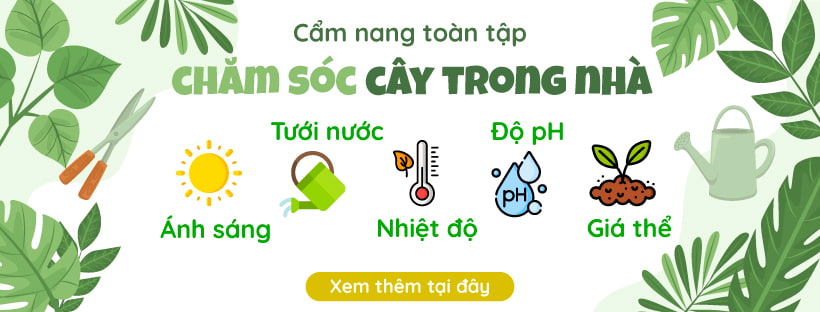WordPress database error: [INSERT, UPDATE command denied to user 'u298232013_p2XAq'@'127.0.0.1' for table `u298232013_pFKjj`.`wp_options`]INSERT INTO `wp_options` (`option_name`, `option_value`, `autoload`) VALUES ('_site_transient_timeout_itsec_wp_upload_dir', '1760696629', 'off') ON DUPLICATE KEY UPDATE `option_name` = VALUES(`option_name`), `option_value` = VALUES(`option_value`), `autoload` = VALUES(`autoload`)
WordPress database error: [INSERT, UPDATE command denied to user 'u298232013_p2XAq'@'127.0.0.1' for table `u298232013_pFKjj`.`wp_options`]INSERT INTO `wp_options` (`option_name`, `option_value`, `autoload`) VALUES ('_site_transient_itsec_wp_upload_dir', 'a:6:{s:4:\"path\";s:70:\"/home/u298232013/domains/kla.vn/public_html/wp-content/uploads/2025/10\";s:3:\"url\";s:41:\"https://kla.vn/wp-content/uploads/2025/10\";s:6:\"subdir\";s:8:\"/2025/10\";s:7:\"basedir\";s:62:\"/home/u298232013/domains/kla.vn/public_html/wp-content/uploads\";s:7:\"baseurl\";s:33:\"https://kla.vn/wp-content/uploads\";s:5:\"error\";b:0;}', 'off') ON DUPLICATE KEY UPDATE `option_name` = VALUES(`option_name`), `option_value` = VALUES(`option_value`), `autoload` = VALUES(`autoload`)
WordPress database error: [UPDATE command denied to user 'u298232013_p2XAq'@'127.0.0.1' for table `u298232013_pFKjj`.`wp_options`]UPDATE `wp_options` SET `option_value` = 'a:12:{s:19:\"machine-translation\";s:2:\"no\";s:18:\"translation-engine\";s:19:\"google_translate_v2\";s:14:\"block-crawlers\";s:3:\"yes\";s:28:\"automatically-translate-slug\";s:3:\"yes\";s:32:\"machine_translation_counter_date\";s:10:\"2025-10-16\";s:33:\"machine_translation_limit_enabled\";s:3:\"yes\";s:25:\"machine_translation_limit\";s:6:\"500000\";s:20:\"google-translate-key\";s:39:\"AIzaSyADE1NqJfh_eSh4uGmf3d-7JkLtTXSsBMo\";s:14:\"deepl-api-type\";s:4:\"free\";s:13:\"deepl-api-key\";s:39:\"7b6bdaeb-a35e-4069-81d1-bd9c5d4c1178:fx\";s:23:\"machine_translation_log\";s:2:\"no\";s:46:\"machine_translation_trigger_quota_notification\";b:0;}' WHERE `option_name` = 'trp_machine_translation_settings'
WordPress database error: [UPDATE command denied to user 'u298232013_p2XAq'@'127.0.0.1' for table `u298232013_pFKjj`.`wp_options`]UPDATE `wp_options` SET `option_value` = '0' WHERE `option_name` = 'trp_machine_translation_counter'
WordPress database error: [INSERT, UPDATE command denied to user 'u298232013_p2XAq'@'127.0.0.1' for table `u298232013_pFKjj`.`wp_options`]INSERT INTO `wp_options` (`option_name`, `option_value`, `autoload`) VALUES ('_site_transient_timeout_available_translations', '1760621030', 'off') ON DUPLICATE KEY UPDATE `option_name` = VALUES(`option_name`), `option_value` = VALUES(`option_value`), `autoload` = VALUES(`autoload`)
WordPress database error: [INSERT, UPDATE command denied to user 'u298232013_p2XAq'@'127.0.0.1' for table `u298232013_pFKjj`.`wp_options`]INSERT INTO `wp_options` (`option_name`, `option_value`, `autoload`) VALUES ('_site_transient_available_translations', 'a:131:{s:2:\"af\";a:8:{s:8:\"language\";s:2:\"af\";s:7:\"version\";s:8:\"5.8-beta\";s:7:\"updated\";s:19:\"2021-05-13 15:59:22\";s:12:\"english_name\";s:9:\"Afrikaans\";s:11:\"native_name\";s:9:\"Afrikaans\";s:7:\"package\";s:64:\"https://downloads.wordpress.org/translation/core/5.8-beta/af.zip\";s:3:\"iso\";a:2:{i:1;s:2:\"af\";i:2;s:3:\"afr\";}s:7:\"strings\";a:1:{s:8:\"continue\";s:10:\"Gaan voort\";}}s:2:\"am\";a:8:{s:8:\"language\";s:2:\"am\";s:7:\"version\";s:6:\"6.0.11\";s:7:\"updated\";s:19:\"2022-09-29 20:43:49\";s:12:\"english_name\";s:7:\"Amharic\";s:11:\"native_name\";s:12:\"አማርኛ\";s:7:\"package\";s:62:\"https://downloads.wordpress.org/translation/core/6.0.11/am.zip\";s:3:\"iso\";a:2:{i:1;s:2:\"am\";i:2;s:3:\"amh\";}s:7:\"strings\";a:1:{s:8:\"continue\";s:9:\"ቀጥል\";}}s:3:\"arg\";a:8:{s:8:\"language\";s:3:\"arg\";s:7:\"version\";s:8:\"6.2-beta\";s:7:\"updated\";s:19:\"2022-09-22 16:46:56\";s:12:\"english_name\";s:9:\"Aragonese\";s:11:\"native_name\";s:9:\"Aragonés\";s:7:\"package\";s:65:\"https://downloads.wordpress.org/translation/core/6.2-beta/arg.zip\";s:3:\"iso\";a:3:{i:1;s:2:\"an\";i:2;s:3:\"arg\";i:3;s:3:\"arg\";}s:7:\"strings\";a:1:{s:8:\"continue\";s:8:\"Continar\";}}s:2:\"ar\";a:8:{s:8:\"language\";s:2:\"ar\";s:7:\"version\";s:5:\"6.4.7\";s:7:\"updated\";s:19:\"2024-02-13 12:49:38\";s:12:\"english_name\";s:6:\"Arabic\";s:11:\"native_name\";s:14:\"العربية\";s:7:\"package\";s:61:\"https://downloads.wordpress.org/translation/core/6.4.7/ar.zip\";s:3:\"iso\";a:2:{i:1;s:2:\"ar\";i:2;s:3:\"ara\";}s:7:\"strings\";a:1:{s:8:\"continue\";s:12:\"متابعة\";}}s:3:\"ary\";a:8:{s:8:\"language\";s:3:\"ary\";s:7:\"version\";s:6:\"4.8.27\";s:7:\"updated\";s:19:\"2017-01-26 15:42:35\";s:12:\"english_name\";s:15:\"Moroccan Arabic\";s:11:\"native_name\";s:31:\"العربية المغربية\";s:7:\"package\";s:63:\"https://downloads.wordpress.org/translation/core/4.8.27/ary.zip\";s:3:\"iso\";a:2:{i:1;s:2:\"ar\";i:3;s:3:\"ary\";}s:7:\"strings\";a:1:{s:8:\"continue\";s:16:\"المتابعة\";}}s:2:\"as\";a:8:{s:8:\"language\";s:2:\"as\";s:7:\"version\";s:5:\"6.7.4\";s:7:\"updated\";s:19:\"2025-08-10 13:09:15\";s:12:\"english_name\";s:8:\"Assamese\";s:11:\"native_name\";s:21:\"অসমীয়া\";s:7:\"package\";s:61:\"https://downloads.wordpress.org/translation/core/6.7.4/as.zip\";s:3:\"iso\";a:3:{i:1;s:2:\"as\";i:2;s:3:\"asm\";i:3;s:3:\"asm\";}s:7:\"strings\";a:1:{s:8:\"continue\";s:8:\"Continue\";}}s:3:\"azb\";a:8:{s:8:\"language\";s:3:\"azb\";s:7:\"version\";s:5:\"6.4.7\";s:7:\"updated\";s:19:\"2024-01-19 08:58:31\";s:12:\"english_name\";s:17:\"South Azerbaijani\";s:11:\"native_name\";s:29:\"گؤنئی آذربایجان\";s:7:\"package\";s:62:\"https://downloads.wordpress.org/translation/core/6.4.7/azb.zip\";s:3:\"iso\";a:2:{i:1;s:2:\"az\";i:3;s:3:\"azb\";}s:7:\"strings\";a:1:{s:8:\"continue\";s:8:\"Continue\";}}s:2:\"az\";a:8:{s:8:\"language\";s:2:\"az\";s:7:\"version\";s:5:\"4.7.2\";s:7:\"updated\";s:19:\"2016-11-06 00:09:27\";s:12:\"english_name\";s:11:\"Azerbaijani\";s:11:\"native_name\";s:16:\"Azərbaycan dili\";s:7:\"package\";s:61:\"https://downloads.wordpress.org/translation/core/4.7.2/az.zip\";s:3:\"iso\";a:2:{i:1;s:2:\"az\";i:2;s:3:\"aze\";}s:7:\"strings\";a:1:{s:8:\"continue\";s:5:\"Davam\";}}s:3:\"bel\";a:8:{s:8:\"language\";s:3:\"bel\";s:7:\"version\";s:6:\"4.9.28\";s:7:\"updated\";s:19:\"2024-12-26 00:37:42\";s:12:\"english_name\";s:10:\"Belarusian\";s:11:\"native_name\";s:29:\"Беларуская мова\";s:7:\"package\";s:63:\"https://downloads.wordpress.org/translation/core/4.9.28/bel.zip\";s:3:\"iso\";a:2:{i:1;s:2:\"be\";i:2;s:3:\"bel\";}s:7:\"strings\";a:1:{s:8:\"continue\";s:20:\"Працягнуць\";}}s:5:\"bg_BG\";a:8:{s:8:\"language\";s:5:\"bg_BG\";s:7:\"version\";s:5:\"6.7.4\";s:7:\"updated\";s:19:\"2025-01-12 07:32:34\";s:12:\"english_name\";s:9:\"Bulgarian\";s:11:\"native_name\";s:18:\"Български\";s:7:\"package\";s:64:\"https://downloads.wordpress.org/translation/core/6.7.4/bg_BG.zip\";s:3:\"iso\";a:2:{i:1;s:2:\"bg\";i:2;s:3:\"bul\";}s:7:\"strings\";a:1:{s:8:\"continue\";s:12:\"Напред\";}}s:5:\"bn_BD\";a:8:{s:8:\"language\";s:5:\"bn_BD\";s:7:\"version\";s:5:\"6.7.4\";s:7:\"updated\";s:19:\"2025-07-01 14:16:47\";s:12:\"english_name\";s:20:\"Bengali (Bangladesh)\";s:11:\"native_name\";s:15:\"বাংলা\";s:7:\"package\";s:64:\"https://downloads.wordpress.org/translation/core/6.7.4/bn_BD.zip\";s:3:\"iso\";a:1:{i:1;s:2:\"bn\";}s:7:\"strings\";a:1:{s:8:\"continue\";s:28:\"চালিয়ে যান\";}}s:2:\"bo\";a:8:{s:8:\"language\";s:2:\"bo\";s:7:\"version\";s:8:\"5.8-beta\";s:7:\"updated\";s:19:\"2020-10-30 03:24:38\";s:12:\"english_name\";s:7:\"Tibetan\";s:11:\"native_name\";s:21:\"བོད་ཡིག\";s:7:\"package\";s:64:\"https://downloads.wordpress.org/translation/core/5.8-beta/bo.zip\";s:3:\"iso\";a:2:{i:1;s:2:\"bo\";i:2;s:3:\"tib\";}s:7:\"strings\";a:1:{s:8:\"continue\";s:33:\"མུ་མཐུད་དུ།\";}}s:5:\"bs_BA\";a:8:{s:8:\"language\";s:5:\"bs_BA\";s:7:\"version\";s:5:\"6.2.8\";s:7:\"updated\";s:19:\"2023-02-22 20:45:53\";s:12:\"english_name\";s:7:\"Bosnian\";s:11:\"native_name\";s:8:\"Bosanski\";s:7:\"package\";s:64:\"https://downloads.wordpress.org/translation/core/6.2.8/bs_BA.zip\";s:3:\"iso\";a:2:{i:1;s:2:\"bs\";i:2;s:3:\"bos\";}s:7:\"strings\";a:1:{s:8:\"continue\";s:7:\"Nastavi\";}}s:2:\"ca\";a:8:{s:8:\"language\";s:2:\"ca\";s:7:\"version\";s:5:\"6.7.4\";s:7:\"updated\";s:19:\"2025-10-12 22:24:40\";s:12:\"english_name\";s:7:\"Catalan\";s:11:\"native_name\";s:7:\"Català\";s:7:\"package\";s:61:\"https://downloads.wordpress.org/translation/core/6.7.4/ca.zip\";s:3:\"iso\";a:2:{i:1;s:2:\"ca\";i:2;s:3:\"cat\";}s:7:\"strings\";a:1:{s:8:\"continue\";s:8:\"Continua\";}}s:3:\"ceb\";a:8:{s:8:\"language\";s:3:\"ceb\";s:7:\"version\";s:5:\"4.7.2\";s:7:\"updated\";s:19:\"2016-03-02 17:25:51\";s:12:\"english_name\";s:7:\"Cebuano\";s:11:\"native_name\";s:7:\"Cebuano\";s:7:\"package\";s:62:\"https://downloads.wordpress.org/translation/core/4.7.2/ceb.zip\";s:3:\"iso\";a:2:{i:2;s:3:\"ceb\";i:3;s:3:\"ceb\";}s:7:\"strings\";a:1:{s:8:\"continue\";s:7:\"Padayun\";}}s:5:\"cs_CZ\";a:8:{s:8:\"language\";s:5:\"cs_CZ\";s:7:\"version\";s:5:\"6.7.4\";s:7:\"updated\";s:19:\"2025-05-15 15:31:31\";s:12:\"english_name\";s:5:\"Czech\";s:11:\"native_name\";s:9:\"Čeština\";s:7:\"package\";s:64:\"https://downloads.wordpress.org/translation/core/6.7.4/cs_CZ.zip\";s:3:\"iso\";a:2:{i:1;s:2:\"cs\";i:2;s:3:\"ces\";}s:7:\"strings\";a:1:{s:8:\"continue\";s:11:\"Pokračovat\";}}s:2:\"cy\";a:8:{s:8:\"language\";s:2:\"cy\";s:7:\"version\";s:5:\"6.7.4\";s:7:\"updated\";s:19:\"2025-10-05 08:42:49\";s:12:\"english_name\";s:5:\"Welsh\";s:11:\"native_name\";s:7:\"Cymraeg\";s:7:\"package\";s:61:\"https://downloads.wordpress.org/translation/core/6.7.4/cy.zip\";s:3:\"iso\";a:2:{i:1;s:2:\"cy\";i:2;s:3:\"cym\";}s:7:\"strings\";a:1:{s:8:\"continue\";s:6:\"Parhau\";}}s:5:\"da_DK\";a:8:{s:8:\"language\";s:5:\"da_DK\";s:7:\"version\";s:5:\"6.7.4\";s:7:\"updated\";s:19:\"2025-10-01 02:39:19\";s:12:\"english_name\";s:6:\"Danish\";s:11:\"native_name\";s:5:\"Dansk\";s:7:\"package\";s:64:\"https://downloads.wordpress.org/translation/core/6.7.4/da_DK.zip\";s:3:\"iso\";a:2:{i:1;s:2:\"da\";i:2;s:3:\"dan\";}s:7:\"strings\";a:1:{s:8:\"continue\";s:8:\"Fortsæt\";}}s:5:\"de_CH\";a:8:{s:8:\"language\";s:5:\"de_CH\";s:7:\"version\";s:5:\"6.7.4\";s:7:\"updated\";s:19:\"2025-04-24 21:46:12\";s:12:\"english_name\";s:20:\"German (Switzerland)\";s:11:\"native_name\";s:17:\"Deutsch (Schweiz)\";s:7:\"package\";s:64:\"https://downloads.wordpress.org/translation/core/6.7.4/de_CH.zip\";s:3:\"iso\";a:1:{i:1;s:2:\"de\";}s:7:\"strings\";a:1:{s:8:\"continue\";s:6:\"Weiter\";}}s:14:\"de_CH_informal\";a:8:{s:8:\"language\";s:14:\"de_CH_informal\";s:7:\"version\";s:5:\"6.7.4\";s:7:\"updated\";s:19:\"2025-04-24 21:47:54\";s:12:\"english_name\";s:30:\"German (Switzerland, Informal)\";s:11:\"native_name\";s:21:\"Deutsch (Schweiz, Du)\";s:7:\"package\";s:73:\"https://downloads.wordpress.org/translation/core/6.7.4/de_CH_informal.zip\";s:3:\"iso\";a:1:{i:1;s:2:\"de\";}s:7:\"strings\";a:1:{s:8:\"continue\";s:6:\"Weiter\";}}s:5:\"de_DE\";a:8:{s:8:\"language\";s:5:\"de_DE\";s:7:\"version\";s:5:\"6.7.4\";s:7:\"updated\";s:19:\"2025-10-14 01:08:24\";s:12:\"english_name\";s:6:\"German\";s:11:\"native_name\";s:7:\"Deutsch\";s:7:\"package\";s:64:\"https://downloads.wordpress.org/translation/core/6.7.4/de_DE.zip\";s:3:\"iso\";a:1:{i:1;s:2:\"de\";}s:7:\"strings\";a:1:{s:8:\"continue\";s:6:\"Weiter\";}}s:12:\"de_DE_formal\";a:8:{s:8:\"language\";s:12:\"de_DE_formal\";s:7:\"version\";s:5:\"6.7.4\";s:7:\"updated\";s:19:\"2025-10-14 01:08:44\";s:12:\"english_name\";s:15:\"German (Formal)\";s:11:\"native_name\";s:13:\"Deutsch (Sie)\";s:7:\"package\";s:71:\"https://downloads.wordpress.org/translation/core/6.7.4/de_DE_formal.zip\";s:3:\"iso\";a:1:{i:1;s:2:\"de\";}s:7:\"strings\";a:1:{s:8:\"continue\";s:6:\"Weiter\";}}s:5:\"de_AT\";a:8:{s:8:\"language\";s:5:\"de_AT\";s:7:\"version\";s:5:\"6.7.4\";s:7:\"updated\";s:19:\"2025-06-05 10:10:27\";s:12:\"english_name\";s:16:\"German (Austria)\";s:11:\"native_name\";s:21:\"Deutsch (Österreich)\";s:7:\"package\";s:64:\"https://downloads.wordpress.org/translation/core/6.7.4/de_AT.zip\";s:3:\"iso\";a:1:{i:1;s:2:\"de\";}s:7:\"strings\";a:1:{s:8:\"continue\";s:6:\"Weiter\";}}s:3:\"dsb\";a:8:{s:8:\"language\";s:3:\"dsb\";s:7:\"version\";s:5:\"6.2.8\";s:7:\"updated\";s:19:\"2022-07-16 12:13:09\";s:12:\"english_name\";s:13:\"Lower Sorbian\";s:11:\"native_name\";s:16:\"Dolnoserbšćina\";s:7:\"package\";s:62:\"https://downloads.wordpress.org/translation/core/6.2.8/dsb.zip\";s:3:\"iso\";a:2:{i:2;s:3:\"dsb\";i:3;s:3:\"dsb\";}s:7:\"strings\";a:1:{s:8:\"continue\";s:5:\"Dalej\";}}s:3:\"dzo\";a:8:{s:8:\"language\";s:3:\"dzo\";s:7:\"version\";s:5:\"4.7.2\";s:7:\"updated\";s:19:\"2016-06-29 08:59:03\";s:12:\"english_name\";s:8:\"Dzongkha\";s:11:\"native_name\";s:18:\"རྫོང་ཁ\";s:7:\"package\";s:62:\"https://downloads.wordpress.org/translation/core/4.7.2/dzo.zip\";s:3:\"iso\";a:2:{i:1;s:2:\"dz\";i:2;s:3:\"dzo\";}s:7:\"strings\";a:1:{s:8:\"continue\";s:8:\"Continue\";}}s:2:\"el\";a:8:{s:8:\"language\";s:2:\"el\";s:7:\"version\";s:5:\"6.7.4\";s:7:\"updated\";s:19:\"2025-09-10 11:36:22\";s:12:\"english_name\";s:5:\"Greek\";s:11:\"native_name\";s:16:\"Ελληνικά\";s:7:\"package\";s:61:\"https://downloads.wordpress.org/translation/core/6.7.4/el.zip\";s:3:\"iso\";a:2:{i:1;s:2:\"el\";i:2;s:3:\"ell\";}s:7:\"strings\";a:1:{s:8:\"continue\";s:16:\"Συνέχεια\";}}s:5:\"en_ZA\";a:8:{s:8:\"language\";s:5:\"en_ZA\";s:7:\"version\";s:5:\"6.7.4\";s:7:\"updated\";s:19:\"2025-08-28 16:30:32\";s:12:\"english_name\";s:22:\"English (South Africa)\";s:11:\"native_name\";s:22:\"English (South Africa)\";s:7:\"package\";s:64:\"https://downloads.wordpress.org/translation/core/6.7.4/en_ZA.zip\";s:3:\"iso\";a:3:{i:1;s:2:\"en\";i:2;s:3:\"eng\";i:3;s:3:\"eng\";}s:7:\"strings\";a:1:{s:8:\"continue\";s:8:\"Continue\";}}s:5:\"en_NZ\";a:8:{s:8:\"language\";s:5:\"en_NZ\";s:7:\"version\";s:5:\"6.7.4\";s:7:\"updated\";s:19:\"2025-05-22 11:58:48\";s:12:\"english_name\";s:21:\"English (New Zealand)\";s:11:\"native_name\";s:21:\"English (New Zealand)\";s:7:\"package\";s:64:\"https://downloads.wordpress.org/translation/core/6.7.4/en_NZ.zip\";s:3:\"iso\";a:3:{i:1;s:2:\"en\";i:2;s:3:\"eng\";i:3;s:3:\"eng\";}s:7:\"strings\";a:1:{s:8:\"continue\";s:8:\"Continue\";}}s:5:\"en_GB\";a:8:{s:8:\"language\";s:5:\"en_GB\";s:7:\"version\";s:5:\"6.7.4\";s:7:\"updated\";s:19:\"2025-10-08 12:55:10\";s:12:\"english_name\";s:12:\"English (UK)\";s:11:\"native_name\";s:12:\"English (UK)\";s:7:\"package\";s:64:\"https://downloads.wordpress.org/translation/core/6.7.4/en_GB.zip\";s:3:\"iso\";a:3:{i:1;s:2:\"en\";i:2;s:3:\"eng\";i:3;s:3:\"eng\";}s:7:\"strings\";a:1:{s:8:\"continue\";s:8:\"Continue\";}}s:5:\"en_AU\";a:8:{s:8:\"language\";s:5:\"en_AU\";s:7:\"version\";s:5:\"6.7.4\";s:7:\"updated\";s:19:\"2025-06-02 07:36:46\";s:12:\"english_name\";s:19:\"English (Australia)\";s:11:\"native_name\";s:19:\"English (Australia)\";s:7:\"package\";s:64:\"https://downloads.wordpress.org/translation/core/6.7.4/en_AU.zip\";s:3:\"iso\";a:3:{i:1;s:2:\"en\";i:2;s:3:\"eng\";i:3;s:3:\"eng\";}s:7:\"strings\";a:1:{s:8:\"continue\";s:8:\"Continue\";}}s:5:\"en_CA\";a:8:{s:8:\"language\";s:5:\"en_CA\";s:7:\"version\";s:5:\"6.7.4\";s:7:\"updated\";s:19:\"2025-03-25 15:37:15\";s:12:\"english_name\";s:16:\"English (Canada)\";s:11:\"native_name\";s:16:\"English (Canada)\";s:7:\"package\";s:64:\"https://downloads.wordpress.org/translation/core/6.7.4/en_CA.zip\";s:3:\"iso\";a:3:{i:1;s:2:\"en\";i:2;s:3:\"eng\";i:3;s:3:\"eng\";}s:7:\"strings\";a:1:{s:8:\"continue\";s:8:\"Continue\";}}s:2:\"eo\";a:8:{s:8:\"language\";s:2:\"eo\";s:7:\"version\";s:5:\"6.7.4\";s:7:\"updated\";s:19:\"2025-02-18 15:16:11\";s:12:\"english_name\";s:9:\"Esperanto\";s:11:\"native_name\";s:9:\"Esperanto\";s:7:\"package\";s:61:\"https://downloads.wordpress.org/translation/core/6.7.4/eo.zip\";s:3:\"iso\";a:2:{i:1;s:2:\"eo\";i:2;s:3:\"epo\";}s:7:\"strings\";a:1:{s:8:\"continue\";s:8:\"Daŭrigi\";}}s:5:\"es_CR\";a:8:{s:8:\"language\";s:5:\"es_CR\";s:7:\"version\";s:5:\"6.7.4\";s:7:\"updated\";s:19:\"2025-05-20 15:44:27\";s:12:\"english_name\";s:20:\"Spanish (Costa Rica)\";s:11:\"native_name\";s:22:\"Español de Costa Rica\";s:7:\"package\";s:64:\"https://downloads.wordpress.org/translation/core/6.7.4/es_CR.zip\";s:3:\"iso\";a:3:{i:1;s:2:\"es\";i:2;s:3:\"spa\";i:3;s:3:\"spa\";}s:7:\"strings\";a:1:{s:8:\"continue\";s:9:\"Continuar\";}}s:5:\"es_PE\";a:8:{s:8:\"language\";s:5:\"es_PE\";s:7:\"version\";s:5:\"6.7.4\";s:7:\"updated\";s:19:\"2024-10-16 21:04:12\";s:12:\"english_name\";s:14:\"Spanish (Peru)\";s:11:\"native_name\";s:17:\"Español de Perú\";s:7:\"package\";s:64:\"https://downloads.wordpress.org/translation/core/6.7.4/es_PE.zip\";s:3:\"iso\";a:3:{i:1;s:2:\"es\";i:2;s:3:\"spa\";i:3;s:3:\"spa\";}s:7:\"strings\";a:1:{s:8:\"continue\";s:9:\"Continuar\";}}s:5:\"es_CL\";a:8:{s:8:\"language\";s:5:\"es_CL\";s:7:\"version\";s:5:\"6.7.4\";s:7:\"updated\";s:19:\"2025-10-02 21:15:55\";s:12:\"english_name\";s:15:\"Spanish (Chile)\";s:11:\"native_name\";s:17:\"Español de Chile\";s:7:\"package\";s:64:\"https://downloads.wordpress.org/translation/core/6.7.4/es_CL.zip\";s:3:\"iso\";a:3:{i:1;s:2:\"es\";i:2;s:3:\"spa\";i:3;s:3:\"spa\";}s:7:\"strings\";a:1:{s:8:\"continue\";s:9:\"Continuar\";}}s:5:\"es_ES\";a:8:{s:8:\"language\";s:5:\"es_ES\";s:7:\"version\";s:5:\"6.7.4\";s:7:\"updated\";s:19:\"2025-10-04 09:30:39\";s:12:\"english_name\";s:15:\"Spanish (Spain)\";s:11:\"native_name\";s:8:\"Español\";s:7:\"package\";s:64:\"https://downloads.wordpress.org/translation/core/6.7.4/es_ES.zip\";s:3:\"iso\";a:3:{i:1;s:2:\"es\";i:2;s:3:\"spa\";i:3;s:3:\"spa\";}s:7:\"strings\";a:1:{s:8:\"continue\";s:9:\"Continuar\";}}s:5:\"es_AR\";a:8:{s:8:\"language\";s:5:\"es_AR\";s:7:\"version\";s:5:\"6.7.4\";s:7:\"updated\";s:19:\"2025-10-08 01:27:07\";s:12:\"english_name\";s:19:\"Spanish (Argentina)\";s:11:\"native_name\";s:21:\"Español de Argentina\";s:7:\"package\";s:64:\"https://downloads.wordpress.org/translation/core/6.7.4/es_AR.zip\";s:3:\"iso\";a:3:{i:1;s:2:\"es\";i:2;s:3:\"spa\";i:3;s:3:\"spa\";}s:7:\"strings\";a:1:{s:8:\"continue\";s:9:\"Continuar\";}}s:5:\"es_CO\";a:8:{s:8:\"language\";s:5:\"es_CO\";s:7:\"version\";s:5:\"6.7.4\";s:7:\"updated\";s:19:\"2025-10-09 03:23:41\";s:12:\"english_name\";s:18:\"Spanish (Colombia)\";s:11:\"native_name\";s:20:\"Español de Colombia\";s:7:\"package\";s:64:\"https://downloads.wordpress.org/translation/core/6.7.4/es_CO.zip\";s:3:\"iso\";a:3:{i:1;s:2:\"es\";i:2;s:3:\"spa\";i:3;s:3:\"spa\";}s:7:\"strings\";a:1:{s:8:\"continue\";s:9:\"Continuar\";}}s:5:\"es_VE\";a:8:{s:8:\"language\";s:5:\"es_VE\";s:7:\"version\";s:5:\"6.4.7\";s:7:\"updated\";s:19:\"2023-10-16 16:00:04\";s:12:\"english_name\";s:19:\"Spanish (Venezuela)\";s:11:\"native_name\";s:21:\"Español de Venezuela\";s:7:\"package\";s:64:\"https://downloads.wordpress.org/translation/core/6.4.7/es_VE.zip\";s:3:\"iso\";a:3:{i:1;s:2:\"es\";i:2;s:3:\"spa\";i:3;s:3:\"spa\";}s:7:\"strings\";a:1:{s:8:\"continue\";s:9:\"Continuar\";}}s:5:\"es_EC\";a:8:{s:8:\"language\";s:5:\"es_EC\";s:7:\"version\";s:5:\"6.2.8\";s:7:\"updated\";s:19:\"2023-04-21 13:32:10\";s:12:\"english_name\";s:17:\"Spanish (Ecuador)\";s:11:\"native_name\";s:19:\"Español de Ecuador\";s:7:\"package\";s:64:\"https://downloads.wordpress.org/translation/core/6.2.8/es_EC.zip\";s:3:\"iso\";a:3:{i:1;s:2:\"es\";i:2;s:3:\"spa\";i:3;s:3:\"spa\";}s:7:\"strings\";a:1:{s:8:\"continue\";s:9:\"Continuar\";}}s:5:\"es_DO\";a:8:{s:8:\"language\";s:5:\"es_DO\";s:7:\"version\";s:6:\"5.8.12\";s:7:\"updated\";s:19:\"2021-10-08 14:32:50\";s:12:\"english_name\";s:28:\"Spanish (Dominican Republic)\";s:11:\"native_name\";s:33:\"Español de República Dominicana\";s:7:\"package\";s:65:\"https://downloads.wordpress.org/translation/core/5.8.12/es_DO.zip\";s:3:\"iso\";a:3:{i:1;s:2:\"es\";i:2;s:3:\"spa\";i:3;s:3:\"spa\";}s:7:\"strings\";a:1:{s:8:\"continue\";s:9:\"Continuar\";}}s:5:\"es_UY\";a:8:{s:8:\"language\";s:5:\"es_UY\";s:7:\"version\";s:8:\"5.8-beta\";s:7:\"updated\";s:19:\"2021-03-31 18:33:26\";s:12:\"english_name\";s:17:\"Spanish (Uruguay)\";s:11:\"native_name\";s:19:\"Español de Uruguay\";s:7:\"package\";s:67:\"https://downloads.wordpress.org/translation/core/5.8-beta/es_UY.zip\";s:3:\"iso\";a:3:{i:1;s:2:\"es\";i:2;s:3:\"spa\";i:3;s:3:\"spa\";}s:7:\"strings\";a:1:{s:8:\"continue\";s:9:\"Continuar\";}}s:5:\"es_PR\";a:8:{s:8:\"language\";s:5:\"es_PR\";s:7:\"version\";s:6:\"5.4.18\";s:7:\"updated\";s:19:\"2020-04-29 15:36:59\";s:12:\"english_name\";s:21:\"Spanish (Puerto Rico)\";s:11:\"native_name\";s:23:\"Español de Puerto Rico\";s:7:\"package\";s:65:\"https://downloads.wordpress.org/translation/core/5.4.18/es_PR.zip\";s:3:\"iso\";a:3:{i:1;s:2:\"es\";i:2;s:3:\"spa\";i:3;s:3:\"spa\";}s:7:\"strings\";a:1:{s:8:\"continue\";s:9:\"Continuar\";}}s:5:\"es_GT\";a:8:{s:8:\"language\";s:5:\"es_GT\";s:7:\"version\";s:6:\"5.2.23\";s:7:\"updated\";s:19:\"2019-03-02 06:35:01\";s:12:\"english_name\";s:19:\"Spanish (Guatemala)\";s:11:\"native_name\";s:21:\"Español de Guatemala\";s:7:\"package\";s:65:\"https://downloads.wordpress.org/translation/core/5.2.23/es_GT.zip\";s:3:\"iso\";a:3:{i:1;s:2:\"es\";i:2;s:3:\"spa\";i:3;s:3:\"spa\";}s:7:\"strings\";a:1:{s:8:\"continue\";s:9:\"Continuar\";}}s:5:\"es_MX\";a:8:{s:8:\"language\";s:5:\"es_MX\";s:7:\"version\";s:5:\"6.7.4\";s:7:\"updated\";s:19:\"2025-09-30 21:17:47\";s:12:\"english_name\";s:16:\"Spanish (Mexico)\";s:11:\"native_name\";s:19:\"Español de México\";s:7:\"package\";s:64:\"https://downloads.wordpress.org/translation/core/6.7.4/es_MX.zip\";s:3:\"iso\";a:3:{i:1;s:2:\"es\";i:2;s:3:\"spa\";i:3;s:3:\"spa\";}s:7:\"strings\";a:1:{s:8:\"continue\";s:9:\"Continuar\";}}s:2:\"et\";a:8:{s:8:\"language\";s:2:\"et\";s:7:\"version\";s:5:\"6.5.5\";s:7:\"updated\";s:19:\"2024-06-06 09:50:37\";s:12:\"english_name\";s:8:\"Estonian\";s:11:\"native_name\";s:5:\"Eesti\";s:7:\"package\";s:61:\"https://downloads.wordpress.org/translation/core/6.5.5/et.zip\";s:3:\"iso\";a:2:{i:1;s:2:\"et\";i:2;s:3:\"est\";}s:7:\"strings\";a:1:{s:8:\"continue\";s:6:\"Jätka\";}}s:2:\"eu\";a:8:{s:8:\"language\";s:2:\"eu\";s:7:\"version\";s:5:\"6.7.4\";s:7:\"updated\";s:19:\"2025-02-26 16:06:47\";s:12:\"english_name\";s:6:\"Basque\";s:11:\"native_name\";s:7:\"Euskara\";s:7:\"package\";s:61:\"https://downloads.wordpress.org/translation/core/6.7.4/eu.zip\";s:3:\"iso\";a:2:{i:1;s:2:\"eu\";i:2;s:3:\"eus\";}s:7:\"strings\";a:1:{s:8:\"continue\";s:8:\"Jarraitu\";}}s:5:\"fa_AF\";a:8:{s:8:\"language\";s:5:\"fa_AF\";s:7:\"version\";s:5:\"6.7.4\";s:7:\"updated\";s:19:\"2025-02-14 17:29:08\";s:12:\"english_name\";s:21:\"Persian (Afghanistan)\";s:11:\"native_name\";s:31:\"(فارسی (افغانستان\";s:7:\"package\";s:64:\"https://downloads.wordpress.org/translation/core/6.7.4/fa_AF.zip\";s:3:\"iso\";a:2:{i:1;s:2:\"fa\";i:2;s:3:\"fas\";}s:7:\"strings\";a:1:{s:8:\"continue\";s:10:\"ادامه\";}}s:5:\"fa_IR\";a:8:{s:8:\"language\";s:5:\"fa_IR\";s:7:\"version\";s:5:\"6.7.4\";s:7:\"updated\";s:19:\"2025-10-02 18:18:21\";s:12:\"english_name\";s:7:\"Persian\";s:11:\"native_name\";s:10:\"فارسی\";s:7:\"package\";s:64:\"https://downloads.wordpress.org/translation/core/6.7.4/fa_IR.zip\";s:3:\"iso\";a:2:{i:1;s:2:\"fa\";i:2;s:3:\"fas\";}s:7:\"strings\";a:1:{s:8:\"continue\";s:10:\"ادامه\";}}s:2:\"fi\";a:8:{s:8:\"language\";s:2:\"fi\";s:7:\"version\";s:5:\"6.7.4\";s:7:\"updated\";s:19:\"2025-03-21 11:24:25\";s:12:\"english_name\";s:7:\"Finnish\";s:11:\"native_name\";s:5:\"Suomi\";s:7:\"package\";s:61:\"https://downloads.wordpress.org/translation/core/6.7.4/fi.zip\";s:3:\"iso\";a:2:{i:1;s:2:\"fi\";i:2;s:3:\"fin\";}s:7:\"strings\";a:1:{s:8:\"continue\";s:5:\"Jatka\";}}s:5:\"fr_CA\";a:8:{s:8:\"language\";s:5:\"fr_CA\";s:7:\"version\";s:5:\"6.7.4\";s:7:\"updated\";s:19:\"2025-09-11 18:55:47\";s:12:\"english_name\";s:15:\"French (Canada)\";s:11:\"native_name\";s:19:\"Français du Canada\";s:7:\"package\";s:64:\"https://downloads.wordpress.org/translation/core/6.7.4/fr_CA.zip\";s:3:\"iso\";a:2:{i:1;s:2:\"fr\";i:2;s:3:\"fra\";}s:7:\"strings\";a:1:{s:8:\"continue\";s:9:\"Continuer\";}}s:5:\"fr_FR\";a:8:{s:8:\"language\";s:5:\"fr_FR\";s:7:\"version\";s:5:\"6.7.4\";s:7:\"updated\";s:19:\"2025-10-01 05:29:20\";s:12:\"english_name\";s:15:\"French (France)\";s:11:\"native_name\";s:9:\"Français\";s:7:\"package\";s:64:\"https://downloads.wordpress.org/translation/core/6.7.4/fr_FR.zip\";s:3:\"iso\";a:1:{i:1;s:2:\"fr\";}s:7:\"strings\";a:1:{s:8:\"continue\";s:9:\"Continuer\";}}s:5:\"fr_BE\";a:8:{s:8:\"language\";s:5:\"fr_BE\";s:7:\"version\";s:5:\"6.5.7\";s:7:\"updated\";s:19:\"2024-02-01 23:56:53\";s:12:\"english_name\";s:16:\"French (Belgium)\";s:11:\"native_name\";s:21:\"Français de Belgique\";s:7:\"package\";s:64:\"https://downloads.wordpress.org/translation/core/6.5.7/fr_BE.zip\";s:3:\"iso\";a:2:{i:1;s:2:\"fr\";i:2;s:3:\"fra\";}s:7:\"strings\";a:1:{s:8:\"continue\";s:9:\"Continuer\";}}s:3:\"fur\";a:8:{s:8:\"language\";s:3:\"fur\";s:7:\"version\";s:6:\"4.8.27\";s:7:\"updated\";s:19:\"2023-04-30 13:56:46\";s:12:\"english_name\";s:8:\"Friulian\";s:11:\"native_name\";s:8:\"Friulian\";s:7:\"package\";s:63:\"https://downloads.wordpress.org/translation/core/4.8.27/fur.zip\";s:3:\"iso\";a:2:{i:2;s:3:\"fur\";i:3;s:3:\"fur\";}s:7:\"strings\";a:1:{s:8:\"continue\";s:8:\"Continue\";}}s:2:\"fy\";a:8:{s:8:\"language\";s:2:\"fy\";s:7:\"version\";s:5:\"6.2.8\";s:7:\"updated\";s:19:\"2022-12-25 12:53:23\";s:12:\"english_name\";s:7:\"Frisian\";s:11:\"native_name\";s:5:\"Frysk\";s:7:\"package\";s:61:\"https://downloads.wordpress.org/translation/core/6.2.8/fy.zip\";s:3:\"iso\";a:2:{i:1;s:2:\"fy\";i:2;s:3:\"fry\";}s:7:\"strings\";a:1:{s:8:\"continue\";s:9:\"Trochgean\";}}s:2:\"gd\";a:8:{s:8:\"language\";s:2:\"gd\";s:7:\"version\";s:5:\"4.7.2\";s:7:\"updated\";s:19:\"2016-08-23 17:41:37\";s:12:\"english_name\";s:15:\"Scottish Gaelic\";s:11:\"native_name\";s:9:\"Gàidhlig\";s:7:\"package\";s:61:\"https://downloads.wordpress.org/translation/core/4.7.2/gd.zip\";s:3:\"iso\";a:3:{i:1;s:2:\"gd\";i:2;s:3:\"gla\";i:3;s:3:\"gla\";}s:7:\"strings\";a:1:{s:8:\"continue\";s:15:\"Lean air adhart\";}}s:5:\"gl_ES\";a:8:{s:8:\"language\";s:5:\"gl_ES\";s:7:\"version\";s:5:\"6.7.4\";s:7:\"updated\";s:19:\"2025-10-02 21:36:46\";s:12:\"english_name\";s:8:\"Galician\";s:11:\"native_name\";s:6:\"Galego\";s:7:\"package\";s:64:\"https://downloads.wordpress.org/translation/core/6.7.4/gl_ES.zip\";s:3:\"iso\";a:2:{i:1;s:2:\"gl\";i:2;s:3:\"glg\";}s:7:\"strings\";a:1:{s:8:\"continue\";s:9:\"Continuar\";}}s:2:\"gu\";a:8:{s:8:\"language\";s:2:\"gu\";s:7:\"version\";s:5:\"6.7.4\";s:7:\"updated\";s:19:\"2025-07-12 07:17:33\";s:12:\"english_name\";s:8:\"Gujarati\";s:11:\"native_name\";s:21:\"ગુજરાતી\";s:7:\"package\";s:61:\"https://downloads.wordpress.org/translation/core/6.7.4/gu.zip\";s:3:\"iso\";a:2:{i:1;s:2:\"gu\";i:2;s:3:\"guj\";}s:7:\"strings\";a:1:{s:8:\"continue\";s:25:\"ચાલુ રાખો\";}}s:3:\"haz\";a:8:{s:8:\"language\";s:3:\"haz\";s:7:\"version\";s:6:\"4.4.34\";s:7:\"updated\";s:19:\"2015-12-05 00:59:09\";s:12:\"english_name\";s:8:\"Hazaragi\";s:11:\"native_name\";s:15:\"هزاره گی\";s:7:\"package\";s:63:\"https://downloads.wordpress.org/translation/core/4.4.34/haz.zip\";s:3:\"iso\";a:1:{i:3;s:3:\"haz\";}s:7:\"strings\";a:1:{s:8:\"continue\";s:10:\"ادامه\";}}s:5:\"he_IL\";a:8:{s:8:\"language\";s:5:\"he_IL\";s:7:\"version\";s:5:\"6.2.8\";s:7:\"updated\";s:19:\"2024-05-04 18:39:24\";s:12:\"english_name\";s:6:\"Hebrew\";s:11:\"native_name\";s:16:\"עִבְרִית\";s:7:\"package\";s:64:\"https://downloads.wordpress.org/translation/core/6.2.8/he_IL.zip\";s:3:\"iso\";a:1:{i:1;s:2:\"he\";}s:7:\"strings\";a:1:{s:8:\"continue\";s:8:\"המשך\";}}s:5:\"hi_IN\";a:8:{s:8:\"language\";s:5:\"hi_IN\";s:7:\"version\";s:5:\"6.4.7\";s:7:\"updated\";s:19:\"2025-02-06 05:17:11\";s:12:\"english_name\";s:5:\"Hindi\";s:11:\"native_name\";s:18:\"हिन्दी\";s:7:\"package\";s:64:\"https://downloads.wordpress.org/translation/core/6.4.7/hi_IN.zip\";s:3:\"iso\";a:2:{i:1;s:2:\"hi\";i:2;s:3:\"hin\";}s:7:\"strings\";a:1:{s:8:\"continue\";s:25:\"जारी रखें\";}}s:2:\"hr\";a:8:{s:8:\"language\";s:2:\"hr\";s:7:\"version\";s:5:\"6.7.4\";s:7:\"updated\";s:19:\"2025-10-12 07:45:49\";s:12:\"english_name\";s:8:\"Croatian\";s:11:\"native_name\";s:8:\"Hrvatski\";s:7:\"package\";s:61:\"https://downloads.wordpress.org/translation/core/6.7.4/hr.zip\";s:3:\"iso\";a:2:{i:1;s:2:\"hr\";i:2;s:3:\"hrv\";}s:7:\"strings\";a:1:{s:8:\"continue\";s:7:\"Nastavi\";}}s:3:\"hsb\";a:8:{s:8:\"language\";s:3:\"hsb\";s:7:\"version\";s:5:\"6.2.8\";s:7:\"updated\";s:19:\"2023-02-22 17:37:32\";s:12:\"english_name\";s:13:\"Upper Sorbian\";s:11:\"native_name\";s:17:\"Hornjoserbšćina\";s:7:\"package\";s:62:\"https://downloads.wordpress.org/translation/core/6.2.8/hsb.zip\";s:3:\"iso\";a:2:{i:2;s:3:\"hsb\";i:3;s:3:\"hsb\";}s:7:\"strings\";a:1:{s:8:\"continue\";s:4:\"Dale\";}}s:5:\"hu_HU\";a:8:{s:8:\"language\";s:5:\"hu_HU\";s:7:\"version\";s:5:\"6.7.4\";s:7:\"updated\";s:19:\"2025-03-13 12:24:50\";s:12:\"english_name\";s:9:\"Hungarian\";s:11:\"native_name\";s:6:\"Magyar\";s:7:\"package\";s:64:\"https://downloads.wordpress.org/translation/core/6.7.4/hu_HU.zip\";s:3:\"iso\";a:2:{i:1;s:2:\"hu\";i:2;s:3:\"hun\";}s:7:\"strings\";a:1:{s:8:\"continue\";s:10:\"Folytatás\";}}s:2:\"hy\";a:8:{s:8:\"language\";s:2:\"hy\";s:7:\"version\";s:5:\"4.7.2\";s:7:\"updated\";s:19:\"2016-12-03 16:21:10\";s:12:\"english_name\";s:8:\"Armenian\";s:11:\"native_name\";s:14:\"Հայերեն\";s:7:\"package\";s:61:\"https://downloads.wordpress.org/translation/core/4.7.2/hy.zip\";s:3:\"iso\";a:2:{i:1;s:2:\"hy\";i:2;s:3:\"hye\";}s:7:\"strings\";a:1:{s:8:\"continue\";s:20:\"Շարունակել\";}}s:5:\"id_ID\";a:8:{s:8:\"language\";s:5:\"id_ID\";s:7:\"version\";s:5:\"6.7.4\";s:7:\"updated\";s:19:\"2025-01-31 11:29:26\";s:12:\"english_name\";s:10:\"Indonesian\";s:11:\"native_name\";s:16:\"Bahasa Indonesia\";s:7:\"package\";s:64:\"https://downloads.wordpress.org/translation/core/6.7.4/id_ID.zip\";s:3:\"iso\";a:2:{i:1;s:2:\"id\";i:2;s:3:\"ind\";}s:7:\"strings\";a:1:{s:8:\"continue\";s:9:\"Lanjutkan\";}}s:5:\"is_IS\";a:8:{s:8:\"language\";s:5:\"is_IS\";s:7:\"version\";s:6:\"4.9.28\";s:7:\"updated\";s:19:\"2018-12-11 10:40:02\";s:12:\"english_name\";s:9:\"Icelandic\";s:11:\"native_name\";s:9:\"Íslenska\";s:7:\"package\";s:65:\"https://downloads.wordpress.org/translation/core/4.9.28/is_IS.zip\";s:3:\"iso\";a:2:{i:1;s:2:\"is\";i:2;s:3:\"isl\";}s:7:\"strings\";a:1:{s:8:\"continue\";s:6:\"Áfram\";}}s:5:\"it_IT\";a:8:{s:8:\"language\";s:5:\"it_IT\";s:7:\"version\";s:5:\"6.7.4\";s:7:\"updated\";s:19:\"2025-10-10 10:29:04\";s:12:\"english_name\";s:7:\"Italian\";s:11:\"native_name\";s:8:\"Italiano\";s:7:\"package\";s:64:\"https://downloads.wordpress.org/translation/core/6.7.4/it_IT.zip\";s:3:\"iso\";a:2:{i:1;s:2:\"it\";i:2;s:3:\"ita\";}s:7:\"strings\";a:1:{s:8:\"continue\";s:8:\"Continua\";}}s:2:\"ja\";a:8:{s:8:\"language\";s:2:\"ja\";s:7:\"version\";s:5:\"6.7.4\";s:7:\"updated\";s:19:\"2025-10-03 13:05:37\";s:12:\"english_name\";s:8:\"Japanese\";s:11:\"native_name\";s:9:\"日本語\";s:7:\"package\";s:61:\"https://downloads.wordpress.org/translation/core/6.7.4/ja.zip\";s:3:\"iso\";a:1:{i:1;s:2:\"ja\";}s:7:\"strings\";a:1:{s:8:\"continue\";s:6:\"次へ\";}}s:5:\"jv_ID\";a:8:{s:8:\"language\";s:5:\"jv_ID\";s:7:\"version\";s:6:\"4.9.28\";s:7:\"updated\";s:19:\"2019-02-16 23:58:56\";s:12:\"english_name\";s:8:\"Javanese\";s:11:\"native_name\";s:9:\"Basa Jawa\";s:7:\"package\";s:65:\"https://downloads.wordpress.org/translation/core/4.9.28/jv_ID.zip\";s:3:\"iso\";a:2:{i:1;s:2:\"jv\";i:2;s:3:\"jav\";}s:7:\"strings\";a:1:{s:8:\"continue\";s:9:\"Nerusaké\";}}s:5:\"ka_GE\";a:8:{s:8:\"language\";s:5:\"ka_GE\";s:7:\"version\";s:5:\"6.7.4\";s:7:\"updated\";s:19:\"2025-02-01 06:53:56\";s:12:\"english_name\";s:8:\"Georgian\";s:11:\"native_name\";s:21:\"ქართული\";s:7:\"package\";s:64:\"https://downloads.wordpress.org/translation/core/6.7.4/ka_GE.zip\";s:3:\"iso\";a:2:{i:1;s:2:\"ka\";i:2;s:3:\"kat\";}s:7:\"strings\";a:1:{s:8:\"continue\";s:30:\"გაგრძელება\";}}s:3:\"kab\";a:8:{s:8:\"language\";s:3:\"kab\";s:7:\"version\";s:5:\"6.2.8\";s:7:\"updated\";s:19:\"2023-07-05 11:40:39\";s:12:\"english_name\";s:6:\"Kabyle\";s:11:\"native_name\";s:9:\"Taqbaylit\";s:7:\"package\";s:62:\"https://downloads.wordpress.org/translation/core/6.2.8/kab.zip\";s:3:\"iso\";a:2:{i:2;s:3:\"kab\";i:3;s:3:\"kab\";}s:7:\"strings\";a:1:{s:8:\"continue\";s:6:\"Kemmel\";}}s:2:\"kk\";a:8:{s:8:\"language\";s:2:\"kk\";s:7:\"version\";s:5:\"6.7.4\";s:7:\"updated\";s:19:\"2024-07-18 02:49:24\";s:12:\"english_name\";s:6:\"Kazakh\";s:11:\"native_name\";s:19:\"Қазақ тілі\";s:7:\"package\";s:61:\"https://downloads.wordpress.org/translation/core/6.7.4/kk.zip\";s:3:\"iso\";a:2:{i:1;s:2:\"kk\";i:2;s:3:\"kaz\";}s:7:\"strings\";a:1:{s:8:\"continue\";s:20:\"Жалғастыру\";}}s:2:\"km\";a:8:{s:8:\"language\";s:2:\"km\";s:7:\"version\";s:6:\"5.2.23\";s:7:\"updated\";s:19:\"2019-06-10 16:18:28\";s:12:\"english_name\";s:5:\"Khmer\";s:11:\"native_name\";s:27:\"ភាសាខ្មែរ\";s:7:\"package\";s:62:\"https://downloads.wordpress.org/translation/core/5.2.23/km.zip\";s:3:\"iso\";a:2:{i:1;s:2:\"km\";i:2;s:3:\"khm\";}s:7:\"strings\";a:1:{s:8:\"continue\";s:12:\"បន្ត\";}}s:2:\"kn\";a:8:{s:8:\"language\";s:2:\"kn\";s:7:\"version\";s:5:\"6.7.4\";s:7:\"updated\";s:19:\"2025-03-11 19:32:39\";s:12:\"english_name\";s:7:\"Kannada\";s:11:\"native_name\";s:15:\"ಕನ್ನಡ\";s:7:\"package\";s:61:\"https://downloads.wordpress.org/translation/core/6.7.4/kn.zip\";s:3:\"iso\";a:2:{i:1;s:2:\"kn\";i:2;s:3:\"kan\";}s:7:\"strings\";a:1:{s:8:\"continue\";s:30:\"ಮುಂದುವರಿಸು\";}}s:5:\"ko_KR\";a:8:{s:8:\"language\";s:5:\"ko_KR\";s:7:\"version\";s:5:\"6.7.4\";s:7:\"updated\";s:19:\"2025-10-02 00:01:29\";s:12:\"english_name\";s:6:\"Korean\";s:11:\"native_name\";s:9:\"한국어\";s:7:\"package\";s:64:\"https://downloads.wordpress.org/translation/core/6.7.4/ko_KR.zip\";s:3:\"iso\";a:2:{i:1;s:2:\"ko\";i:2;s:3:\"kor\";}s:7:\"strings\";a:1:{s:8:\"continue\";s:6:\"계속\";}}s:3:\"ckb\";a:8:{s:8:\"language\";s:3:\"ckb\";s:7:\"version\";s:5:\"6.7.4\";s:7:\"updated\";s:19:\"2025-03-22 19:22:33\";s:12:\"english_name\";s:16:\"Kurdish (Sorani)\";s:11:\"native_name\";s:13:\"كوردی\";s:7:\"package\";s:62:\"https://downloads.wordpress.org/translation/core/6.7.4/ckb.zip\";s:3:\"iso\";a:2:{i:1;s:2:\"ku\";i:3;s:3:\"ckb\";}s:7:\"strings\";a:1:{s:8:\"continue\";s:30:\"بهردهوام به\";}}s:3:\"kir\";a:8:{s:8:\"language\";s:3:\"kir\";s:7:\"version\";s:5:\"6.7.4\";s:7:\"updated\";s:19:\"2025-02-25 04:09:28\";s:12:\"english_name\";s:6:\"Kyrgyz\";s:11:\"native_name\";s:16:\"Кыргызча\";s:7:\"package\";s:62:\"https://downloads.wordpress.org/translation/core/6.7.4/kir.zip\";s:3:\"iso\";a:3:{i:1;s:2:\"ky\";i:2;s:3:\"kir\";i:3;s:3:\"kir\";}s:7:\"strings\";a:1:{s:8:\"continue\";s:14:\"Улантуу\";}}s:2:\"lo\";a:8:{s:8:\"language\";s:2:\"lo\";s:7:\"version\";s:5:\"4.7.2\";s:7:\"updated\";s:19:\"2016-11-12 09:59:23\";s:12:\"english_name\";s:3:\"Lao\";s:11:\"native_name\";s:21:\"ພາສາລາວ\";s:7:\"package\";s:61:\"https://downloads.wordpress.org/translation/core/4.7.2/lo.zip\";s:3:\"iso\";a:2:{i:1;s:2:\"lo\";i:2;s:3:\"lao\";}s:7:\"strings\";a:1:{s:8:\"continue\";s:18:\"ຕໍ່ໄປ\";}}s:5:\"lt_LT\";a:8:{s:8:\"language\";s:5:\"lt_LT\";s:7:\"version\";s:5:\"6.5.7\";s:7:\"updated\";s:19:\"2024-06-13 13:11:03\";s:12:\"english_name\";s:10:\"Lithuanian\";s:11:\"native_name\";s:15:\"Lietuvių kalba\";s:7:\"package\";s:64:\"https://downloads.wordpress.org/translation/core/6.5.7/lt_LT.zip\";s:3:\"iso\";a:2:{i:1;s:2:\"lt\";i:2;s:3:\"lit\";}s:7:\"strings\";a:1:{s:8:\"continue\";s:6:\"Tęsti\";}}s:2:\"lv\";a:8:{s:8:\"language\";s:2:\"lv\";s:7:\"version\";s:5:\"6.7.4\";s:7:\"updated\";s:19:\"2025-05-22 08:17:15\";s:12:\"english_name\";s:7:\"Latvian\";s:11:\"native_name\";s:16:\"Latviešu valoda\";s:7:\"package\";s:61:\"https://downloads.wordpress.org/translation/core/6.7.4/lv.zip\";s:3:\"iso\";a:2:{i:1;s:2:\"lv\";i:2;s:3:\"lav\";}s:7:\"strings\";a:1:{s:8:\"continue\";s:9:\"Turpināt\";}}s:5:\"mk_MK\";a:8:{s:8:\"language\";s:5:\"mk_MK\";s:7:\"version\";s:6:\"6.0.11\";s:7:\"updated\";s:19:\"2022-10-01 09:23:52\";s:12:\"english_name\";s:10:\"Macedonian\";s:11:\"native_name\";s:31:\"Македонски јазик\";s:7:\"package\";s:65:\"https://downloads.wordpress.org/translation/core/6.0.11/mk_MK.zip\";s:3:\"iso\";a:2:{i:1;s:2:\"mk\";i:2;s:3:\"mkd\";}s:7:\"strings\";a:1:{s:8:\"continue\";s:16:\"Продолжи\";}}s:5:\"ml_IN\";a:8:{s:8:\"language\";s:5:\"ml_IN\";s:7:\"version\";s:5:\"6.7.4\";s:7:\"updated\";s:19:\"2025-03-20 16:41:38\";s:12:\"english_name\";s:9:\"Malayalam\";s:11:\"native_name\";s:18:\"മലയാളം\";s:7:\"package\";s:64:\"https://downloads.wordpress.org/translation/core/6.7.4/ml_IN.zip\";s:3:\"iso\";a:2:{i:1;s:2:\"ml\";i:2;s:3:\"mal\";}s:7:\"strings\";a:1:{s:8:\"continue\";s:18:\"തുടരുക\";}}s:2:\"mn\";a:8:{s:8:\"language\";s:2:\"mn\";s:7:\"version\";s:5:\"6.5.7\";s:7:\"updated\";s:19:\"2024-06-20 17:22:06\";s:12:\"english_name\";s:9:\"Mongolian\";s:11:\"native_name\";s:12:\"Монгол\";s:7:\"package\";s:61:\"https://downloads.wordpress.org/translation/core/6.5.7/mn.zip\";s:3:\"iso\";a:2:{i:1;s:2:\"mn\";i:2;s:3:\"mon\";}s:7:\"strings\";a:1:{s:8:\"continue\";s:8:\"Continue\";}}s:2:\"mr\";a:8:{s:8:\"language\";s:2:\"mr\";s:7:\"version\";s:5:\"6.7.4\";s:7:\"updated\";s:19:\"2025-02-15 06:59:18\";s:12:\"english_name\";s:7:\"Marathi\";s:11:\"native_name\";s:15:\"मराठी\";s:7:\"package\";s:61:\"https://downloads.wordpress.org/translation/core/6.7.4/mr.zip\";s:3:\"iso\";a:2:{i:1;s:2:\"mr\";i:2;s:3:\"mar\";}s:7:\"strings\";a:1:{s:8:\"continue\";s:25:\"सुरु ठेवा\";}}s:5:\"ms_MY\";a:8:{s:8:\"language\";s:5:\"ms_MY\";s:7:\"version\";s:6:\"5.5.17\";s:7:\"updated\";s:19:\"2022-03-11 13:52:22\";s:12:\"english_name\";s:5:\"Malay\";s:11:\"native_name\";s:13:\"Bahasa Melayu\";s:7:\"package\";s:65:\"https://downloads.wordpress.org/translation/core/5.5.17/ms_MY.zip\";s:3:\"iso\";a:2:{i:1;s:2:\"ms\";i:2;s:3:\"msa\";}s:7:\"strings\";a:1:{s:8:\"continue\";s:8:\"Teruskan\";}}s:5:\"my_MM\";a:8:{s:8:\"language\";s:5:\"my_MM\";s:7:\"version\";s:6:\"4.2.39\";s:7:\"updated\";s:19:\"2017-12-26 11:57:10\";s:12:\"english_name\";s:17:\"Myanmar (Burmese)\";s:11:\"native_name\";s:15:\"ဗမာစာ\";s:7:\"package\";s:65:\"https://downloads.wordpress.org/translation/core/4.2.39/my_MM.zip\";s:3:\"iso\";a:2:{i:1;s:2:\"my\";i:2;s:3:\"mya\";}s:7:\"strings\";a:1:{s:8:\"continue\";s:54:\"ဆက်လက်လုပ်ဆောင်ပါ။\";}}s:5:\"nb_NO\";a:8:{s:8:\"language\";s:5:\"nb_NO\";s:7:\"version\";s:5:\"6.7.4\";s:7:\"updated\";s:19:\"2025-09-30 18:17:21\";s:12:\"english_name\";s:19:\"Norwegian (Bokmål)\";s:11:\"native_name\";s:13:\"Norsk bokmål\";s:7:\"package\";s:64:\"https://downloads.wordpress.org/translation/core/6.7.4/nb_NO.zip\";s:3:\"iso\";a:2:{i:1;s:2:\"nb\";i:2;s:3:\"nob\";}s:7:\"strings\";a:1:{s:8:\"continue\";s:8:\"Fortsett\";}}s:5:\"ne_NP\";a:8:{s:8:\"language\";s:5:\"ne_NP\";s:7:\"version\";s:5:\"6.6.4\";s:7:\"updated\";s:19:\"2024-08-30 11:32:23\";s:12:\"english_name\";s:6:\"Nepali\";s:11:\"native_name\";s:18:\"नेपाली\";s:7:\"package\";s:64:\"https://downloads.wordpress.org/translation/core/6.6.4/ne_NP.zip\";s:3:\"iso\";a:2:{i:1;s:2:\"ne\";i:2;s:3:\"nep\";}s:7:\"strings\";a:1:{s:8:\"continue\";s:43:\"जारी राख्नुहोस्\";}}s:5:\"nl_NL\";a:8:{s:8:\"language\";s:5:\"nl_NL\";s:7:\"version\";s:5:\"6.7.4\";s:7:\"updated\";s:19:\"2025-09-30 21:34:50\";s:12:\"english_name\";s:5:\"Dutch\";s:11:\"native_name\";s:10:\"Nederlands\";s:7:\"package\";s:64:\"https://downloads.wordpress.org/translation/core/6.7.4/nl_NL.zip\";s:3:\"iso\";a:2:{i:1;s:2:\"nl\";i:2;s:3:\"nld\";}s:7:\"strings\";a:1:{s:8:\"continue\";s:8:\"Doorgaan\";}}s:5:\"nl_BE\";a:8:{s:8:\"language\";s:5:\"nl_BE\";s:7:\"version\";s:5:\"6.7.4\";s:7:\"updated\";s:19:\"2025-10-01 07:31:36\";s:12:\"english_name\";s:15:\"Dutch (Belgium)\";s:11:\"native_name\";s:20:\"Nederlands (België)\";s:7:\"package\";s:64:\"https://downloads.wordpress.org/translation/core/6.7.4/nl_BE.zip\";s:3:\"iso\";a:2:{i:1;s:2:\"nl\";i:2;s:3:\"nld\";}s:7:\"strings\";a:1:{s:8:\"continue\";s:8:\"Doorgaan\";}}s:12:\"nl_NL_formal\";a:8:{s:8:\"language\";s:12:\"nl_NL_formal\";s:7:\"version\";s:5:\"6.7.4\";s:7:\"updated\";s:19:\"2025-09-30 21:41:35\";s:12:\"english_name\";s:14:\"Dutch (Formal)\";s:11:\"native_name\";s:20:\"Nederlands (Formeel)\";s:7:\"package\";s:71:\"https://downloads.wordpress.org/translation/core/6.7.4/nl_NL_formal.zip\";s:3:\"iso\";a:2:{i:1;s:2:\"nl\";i:2;s:3:\"nld\";}s:7:\"strings\";a:1:{s:8:\"continue\";s:8:\"Doorgaan\";}}s:5:\"nn_NO\";a:8:{s:8:\"language\";s:5:\"nn_NO\";s:7:\"version\";s:8:\"5.8-beta\";s:7:\"updated\";s:19:\"2021-03-18 10:59:16\";s:12:\"english_name\";s:19:\"Norwegian (Nynorsk)\";s:11:\"native_name\";s:13:\"Norsk nynorsk\";s:7:\"package\";s:67:\"https://downloads.wordpress.org/translation/core/5.8-beta/nn_NO.zip\";s:3:\"iso\";a:2:{i:1;s:2:\"nn\";i:2;s:3:\"nno\";}s:7:\"strings\";a:1:{s:8:\"continue\";s:9:\"Hald fram\";}}s:3:\"oci\";a:8:{s:8:\"language\";s:3:\"oci\";s:7:\"version\";s:6:\"4.8.27\";s:7:\"updated\";s:19:\"2017-08-25 10:03:08\";s:12:\"english_name\";s:7:\"Occitan\";s:11:\"native_name\";s:7:\"Occitan\";s:7:\"package\";s:63:\"https://downloads.wordpress.org/translation/core/4.8.27/oci.zip\";s:3:\"iso\";a:2:{i:1;s:2:\"oc\";i:2;s:3:\"oci\";}s:7:\"strings\";a:1:{s:8:\"continue\";s:9:\"Contunhar\";}}s:5:\"pa_IN\";a:8:{s:8:\"language\";s:5:\"pa_IN\";s:7:\"version\";s:5:\"4.7.2\";s:7:\"updated\";s:19:\"2017-01-16 05:19:43\";s:12:\"english_name\";s:15:\"Panjabi (India)\";s:11:\"native_name\";s:18:\"ਪੰਜਾਬੀ\";s:7:\"package\";s:64:\"https://downloads.wordpress.org/translation/core/4.7.2/pa_IN.zip\";s:3:\"iso\";a:2:{i:1;s:2:\"pa\";i:2;s:3:\"pan\";}s:7:\"strings\";a:1:{s:8:\"continue\";s:25:\"ਜਾਰੀ ਰੱਖੋ\";}}s:5:\"pl_PL\";a:8:{s:8:\"language\";s:5:\"pl_PL\";s:7:\"version\";s:5:\"6.7.4\";s:7:\"updated\";s:19:\"2025-10-01 14:42:49\";s:12:\"english_name\";s:6:\"Polish\";s:11:\"native_name\";s:6:\"Polski\";s:7:\"package\";s:64:\"https://downloads.wordpress.org/translation/core/6.7.4/pl_PL.zip\";s:3:\"iso\";a:2:{i:1;s:2:\"pl\";i:2;s:3:\"pol\";}s:7:\"strings\";a:1:{s:8:\"continue\";s:9:\"Kontynuuj\";}}s:2:\"ps\";a:8:{s:8:\"language\";s:2:\"ps\";s:7:\"version\";s:6:\"4.3.35\";s:7:\"updated\";s:19:\"2015-12-02 21:41:29\";s:12:\"english_name\";s:6:\"Pashto\";s:11:\"native_name\";s:8:\"پښتو\";s:7:\"package\";s:62:\"https://downloads.wordpress.org/translation/core/4.3.35/ps.zip\";s:3:\"iso\";a:2:{i:1;s:2:\"ps\";i:2;s:3:\"pus\";}s:7:\"strings\";a:1:{s:8:\"continue\";s:19:\"دوام ورکړه\";}}s:10:\"pt_PT_ao90\";a:8:{s:8:\"language\";s:10:\"pt_PT_ao90\";s:7:\"version\";s:5:\"6.7.4\";s:7:\"updated\";s:19:\"2024-11-22 09:42:36\";s:12:\"english_name\";s:27:\"Portuguese (Portugal, AO90)\";s:11:\"native_name\";s:17:\"Português (AO90)\";s:7:\"package\";s:69:\"https://downloads.wordpress.org/translation/core/6.7.4/pt_PT_ao90.zip\";s:3:\"iso\";a:1:{i:1;s:2:\"pt\";}s:7:\"strings\";a:1:{s:8:\"continue\";s:9:\"Continuar\";}}s:5:\"pt_PT\";a:8:{s:8:\"language\";s:5:\"pt_PT\";s:7:\"version\";s:5:\"6.7.4\";s:7:\"updated\";s:19:\"2025-10-10 08:02:17\";s:12:\"english_name\";s:21:\"Portuguese (Portugal)\";s:11:\"native_name\";s:10:\"Português\";s:7:\"package\";s:64:\"https://downloads.wordpress.org/translation/core/6.7.4/pt_PT.zip\";s:3:\"iso\";a:1:{i:1;s:2:\"pt\";}s:7:\"strings\";a:1:{s:8:\"continue\";s:9:\"Continuar\";}}s:5:\"pt_AO\";a:8:{s:8:\"language\";s:5:\"pt_AO\";s:7:\"version\";s:5:\"6.4.7\";s:7:\"updated\";s:19:\"2023-08-21 12:15:00\";s:12:\"english_name\";s:19:\"Portuguese (Angola)\";s:11:\"native_name\";s:20:\"Português de Angola\";s:7:\"package\";s:64:\"https://downloads.wordpress.org/translation/core/6.4.7/pt_AO.zip\";s:3:\"iso\";a:1:{i:1;s:2:\"pt\";}s:7:\"strings\";a:1:{s:8:\"continue\";s:9:\"Continuar\";}}s:5:\"pt_BR\";a:8:{s:8:\"language\";s:5:\"pt_BR\";s:7:\"version\";s:5:\"6.7.4\";s:7:\"updated\";s:19:\"2025-02-25 12:07:35\";s:12:\"english_name\";s:19:\"Portuguese (Brazil)\";s:11:\"native_name\";s:20:\"Português do Brasil\";s:7:\"package\";s:64:\"https://downloads.wordpress.org/translation/core/6.7.4/pt_BR.zip\";s:3:\"iso\";a:2:{i:1;s:2:\"pt\";i:2;s:3:\"por\";}s:7:\"strings\";a:1:{s:8:\"continue\";s:9:\"Continuar\";}}s:3:\"rhg\";a:8:{s:8:\"language\";s:3:\"rhg\";s:7:\"version\";s:5:\"4.7.2\";s:7:\"updated\";s:19:\"2016-03-16 13:03:18\";s:12:\"english_name\";s:8:\"Rohingya\";s:11:\"native_name\";s:8:\"Ruáinga\";s:7:\"package\";s:62:\"https://downloads.wordpress.org/translation/core/4.7.2/rhg.zip\";s:3:\"iso\";a:1:{i:3;s:3:\"rhg\";}s:7:\"strings\";a:1:{s:8:\"continue\";s:8:\"Continue\";}}s:5:\"ro_RO\";a:8:{s:8:\"language\";s:5:\"ro_RO\";s:7:\"version\";s:5:\"6.7.4\";s:7:\"updated\";s:19:\"2025-10-11 16:32:04\";s:12:\"english_name\";s:8:\"Romanian\";s:11:\"native_name\";s:8:\"Română\";s:7:\"package\";s:64:\"https://downloads.wordpress.org/translation/core/6.7.4/ro_RO.zip\";s:3:\"iso\";a:2:{i:1;s:2:\"ro\";i:2;s:3:\"ron\";}s:7:\"strings\";a:1:{s:8:\"continue\";s:9:\"Continuă\";}}s:5:\"ru_RU\";a:8:{s:8:\"language\";s:5:\"ru_RU\";s:7:\"version\";s:5:\"6.7.4\";s:7:\"updated\";s:19:\"2025-09-30 19:16:57\";s:12:\"english_name\";s:7:\"Russian\";s:11:\"native_name\";s:14:\"Русский\";s:7:\"package\";s:64:\"https://downloads.wordpress.org/translation/core/6.7.4/ru_RU.zip\";s:3:\"iso\";a:2:{i:1;s:2:\"ru\";i:2;s:3:\"rus\";}s:7:\"strings\";a:1:{s:8:\"continue\";s:20:\"Продолжить\";}}s:3:\"sah\";a:8:{s:8:\"language\";s:3:\"sah\";s:7:\"version\";s:5:\"4.7.2\";s:7:\"updated\";s:19:\"2017-01-21 02:06:41\";s:12:\"english_name\";s:5:\"Sakha\";s:11:\"native_name\";s:14:\"Сахалыы\";s:7:\"package\";s:62:\"https://downloads.wordpress.org/translation/core/4.7.2/sah.zip\";s:3:\"iso\";a:2:{i:2;s:3:\"sah\";i:3;s:3:\"sah\";}s:7:\"strings\";a:1:{s:8:\"continue\";s:12:\"Салҕаа\";}}s:3:\"snd\";a:8:{s:8:\"language\";s:3:\"snd\";s:7:\"version\";s:6:\"5.4.18\";s:7:\"updated\";s:19:\"2020-07-07 01:53:37\";s:12:\"english_name\";s:6:\"Sindhi\";s:11:\"native_name\";s:8:\"سنڌي\";s:7:\"package\";s:63:\"https://downloads.wordpress.org/translation/core/5.4.18/snd.zip\";s:3:\"iso\";a:3:{i:1;s:2:\"sd\";i:2;s:3:\"snd\";i:3;s:3:\"snd\";}s:7:\"strings\";a:1:{s:8:\"continue\";s:15:\"اڳتي هلو\";}}s:5:\"si_LK\";a:8:{s:8:\"language\";s:5:\"si_LK\";s:7:\"version\";s:5:\"4.7.2\";s:7:\"updated\";s:19:\"2016-11-12 06:00:52\";s:12:\"english_name\";s:7:\"Sinhala\";s:11:\"native_name\";s:15:\"සිංහල\";s:7:\"package\";s:64:\"https://downloads.wordpress.org/translation/core/4.7.2/si_LK.zip\";s:3:\"iso\";a:2:{i:1;s:2:\"si\";i:2;s:3:\"sin\";}s:7:\"strings\";a:1:{s:8:\"continue\";s:44:\"දිගටම කරගෙන යන්න\";}}s:5:\"sk_SK\";a:8:{s:8:\"language\";s:5:\"sk_SK\";s:7:\"version\";s:5:\"6.7.4\";s:7:\"updated\";s:19:\"2025-10-10 10:35:25\";s:12:\"english_name\";s:6:\"Slovak\";s:11:\"native_name\";s:11:\"Slovenčina\";s:7:\"package\";s:64:\"https://downloads.wordpress.org/translation/core/6.7.4/sk_SK.zip\";s:3:\"iso\";a:2:{i:1;s:2:\"sk\";i:2;s:3:\"slk\";}s:7:\"strings\";a:1:{s:8:\"continue\";s:12:\"Pokračovať\";}}s:3:\"skr\";a:8:{s:8:\"language\";s:3:\"skr\";s:7:\"version\";s:5:\"6.6.2\";s:7:\"updated\";s:19:\"2024-09-21 09:44:08\";s:12:\"english_name\";s:7:\"Saraiki\";s:11:\"native_name\";s:14:\"سرائیکی\";s:7:\"package\";s:62:\"https://downloads.wordpress.org/translation/core/6.6.2/skr.zip\";s:3:\"iso\";a:1:{i:3;s:3:\"skr\";}s:7:\"strings\";a:1:{s:8:\"continue\";s:17:\"جاری رکھو\";}}s:5:\"sl_SI\";a:8:{s:8:\"language\";s:5:\"sl_SI\";s:7:\"version\";s:5:\"6.7.4\";s:7:\"updated\";s:19:\"2024-08-30 07:14:35\";s:12:\"english_name\";s:9:\"Slovenian\";s:11:\"native_name\";s:13:\"Slovenščina\";s:7:\"package\";s:64:\"https://downloads.wordpress.org/translation/core/6.7.4/sl_SI.zip\";s:3:\"iso\";a:2:{i:1;s:2:\"sl\";i:2;s:3:\"slv\";}s:7:\"strings\";a:1:{s:8:\"continue\";s:8:\"Nadaljuj\";}}s:2:\"sq\";a:8:{s:8:\"language\";s:2:\"sq\";s:7:\"version\";s:5:\"6.7.4\";s:7:\"updated\";s:19:\"2025-04-18 14:54:04\";s:12:\"english_name\";s:8:\"Albanian\";s:11:\"native_name\";s:5:\"Shqip\";s:7:\"package\";s:61:\"https://downloads.wordpress.org/translation/core/6.7.4/sq.zip\";s:3:\"iso\";a:2:{i:1;s:2:\"sq\";i:2;s:3:\"sqi\";}s:7:\"strings\";a:1:{s:8:\"continue\";s:6:\"Vazhdo\";}}s:5:\"sr_RS\";a:8:{s:8:\"language\";s:5:\"sr_RS\";s:7:\"version\";s:5:\"6.7.4\";s:7:\"updated\";s:19:\"2025-09-08 21:01:21\";s:12:\"english_name\";s:7:\"Serbian\";s:11:\"native_name\";s:23:\"Српски језик\";s:7:\"package\";s:64:\"https://downloads.wordpress.org/translation/core/6.7.4/sr_RS.zip\";s:3:\"iso\";a:2:{i:1;s:2:\"sr\";i:2;s:3:\"srp\";}s:7:\"strings\";a:1:{s:8:\"continue\";s:14:\"Настави\";}}s:5:\"sv_SE\";a:8:{s:8:\"language\";s:5:\"sv_SE\";s:7:\"version\";s:5:\"6.7.4\";s:7:\"updated\";s:19:\"2025-09-30 19:21:59\";s:12:\"english_name\";s:7:\"Swedish\";s:11:\"native_name\";s:7:\"Svenska\";s:7:\"package\";s:64:\"https://downloads.wordpress.org/translation/core/6.7.4/sv_SE.zip\";s:3:\"iso\";a:2:{i:1;s:2:\"sv\";i:2;s:3:\"swe\";}s:7:\"strings\";a:1:{s:8:\"continue\";s:9:\"Fortsätt\";}}s:2:\"sw\";a:8:{s:8:\"language\";s:2:\"sw\";s:7:\"version\";s:5:\"6.7.4\";s:7:\"updated\";s:19:\"2025-02-02 07:29:05\";s:12:\"english_name\";s:7:\"Swahili\";s:11:\"native_name\";s:9:\"Kiswahili\";s:7:\"package\";s:61:\"https://downloads.wordpress.org/translation/core/6.7.4/sw.zip\";s:3:\"iso\";a:2:{i:1;s:2:\"sw\";i:2;s:3:\"swa\";}s:7:\"strings\";a:1:{s:8:\"continue\";s:7:\"Endelea\";}}s:3:\"szl\";a:8:{s:8:\"language\";s:3:\"szl\";s:7:\"version\";s:5:\"4.7.2\";s:7:\"updated\";s:19:\"2016-09-24 19:58:14\";s:12:\"english_name\";s:8:\"Silesian\";s:11:\"native_name\";s:17:\"Ślōnskŏ gŏdka\";s:7:\"package\";s:62:\"https://downloads.wordpress.org/translation/core/4.7.2/szl.zip\";s:3:\"iso\";a:1:{i:3;s:3:\"szl\";}s:7:\"strings\";a:1:{s:8:\"continue\";s:13:\"Kōntynuować\";}}s:5:\"ta_IN\";a:8:{s:8:\"language\";s:5:\"ta_IN\";s:7:\"version\";s:5:\"4.7.2\";s:7:\"updated\";s:19:\"2017-01-27 03:22:47\";s:12:\"english_name\";s:5:\"Tamil\";s:11:\"native_name\";s:15:\"தமிழ்\";s:7:\"package\";s:64:\"https://downloads.wordpress.org/translation/core/4.7.2/ta_IN.zip\";s:3:\"iso\";a:2:{i:1;s:2:\"ta\";i:2;s:3:\"tam\";}s:7:\"strings\";a:1:{s:8:\"continue\";s:24:\"தொடரவும்\";}}s:5:\"ta_LK\";a:8:{s:8:\"language\";s:5:\"ta_LK\";s:7:\"version\";s:6:\"4.2.39\";s:7:\"updated\";s:19:\"2015-12-03 01:07:44\";s:12:\"english_name\";s:17:\"Tamil (Sri Lanka)\";s:11:\"native_name\";s:15:\"தமிழ்\";s:7:\"package\";s:65:\"https://downloads.wordpress.org/translation/core/4.2.39/ta_LK.zip\";s:3:\"iso\";a:2:{i:1;s:2:\"ta\";i:2;s:3:\"tam\";}s:7:\"strings\";a:1:{s:8:\"continue\";s:18:\"தொடர்க\";}}s:2:\"te\";a:8:{s:8:\"language\";s:2:\"te\";s:7:\"version\";s:5:\"4.7.2\";s:7:\"updated\";s:19:\"2017-01-26 15:47:39\";s:12:\"english_name\";s:6:\"Telugu\";s:11:\"native_name\";s:18:\"తెలుగు\";s:7:\"package\";s:61:\"https://downloads.wordpress.org/translation/core/4.7.2/te.zip\";s:3:\"iso\";a:2:{i:1;s:2:\"te\";i:2;s:3:\"tel\";}s:7:\"strings\";a:1:{s:8:\"continue\";s:30:\"కొనసాగించు\";}}s:2:\"th\";a:8:{s:8:\"language\";s:2:\"th\";s:7:\"version\";s:6:\"5.8.12\";s:7:\"updated\";s:19:\"2022-06-08 04:30:30\";s:12:\"english_name\";s:4:\"Thai\";s:11:\"native_name\";s:9:\"ไทย\";s:7:\"package\";s:62:\"https://downloads.wordpress.org/translation/core/5.8.12/th.zip\";s:3:\"iso\";a:2:{i:1;s:2:\"th\";i:2;s:3:\"tha\";}s:7:\"strings\";a:1:{s:8:\"continue\";s:15:\"ต่อไป\";}}s:2:\"tl\";a:8:{s:8:\"language\";s:2:\"tl\";s:7:\"version\";s:5:\"6.7.4\";s:7:\"updated\";s:19:\"2025-10-10 17:39:04\";s:12:\"english_name\";s:7:\"Tagalog\";s:11:\"native_name\";s:7:\"Tagalog\";s:7:\"package\";s:61:\"https://downloads.wordpress.org/translation/core/6.7.4/tl.zip\";s:3:\"iso\";a:2:{i:1;s:2:\"tl\";i:2;s:3:\"tgl\";}s:7:\"strings\";a:1:{s:8:\"continue\";s:10:\"Magpatuloy\";}}s:5:\"tr_TR\";a:8:{s:8:\"language\";s:5:\"tr_TR\";s:7:\"version\";s:5:\"6.7.4\";s:7:\"updated\";s:19:\"2025-03-14 00:21:51\";s:12:\"english_name\";s:7:\"Turkish\";s:11:\"native_name\";s:8:\"Türkçe\";s:7:\"package\";s:64:\"https://downloads.wordpress.org/translation/core/6.7.4/tr_TR.zip\";s:3:\"iso\";a:2:{i:1;s:2:\"tr\";i:2;s:3:\"tur\";}s:7:\"strings\";a:1:{s:8:\"continue\";s:5:\"Devam\";}}s:5:\"tt_RU\";a:8:{s:8:\"language\";s:5:\"tt_RU\";s:7:\"version\";s:5:\"4.7.2\";s:7:\"updated\";s:19:\"2016-11-20 20:20:50\";s:12:\"english_name\";s:5:\"Tatar\";s:11:\"native_name\";s:19:\"Татар теле\";s:7:\"package\";s:64:\"https://downloads.wordpress.org/translation/core/4.7.2/tt_RU.zip\";s:3:\"iso\";a:2:{i:1;s:2:\"tt\";i:2;s:3:\"tat\";}s:7:\"strings\";a:1:{s:8:\"continue\";s:17:\"дәвам итү\";}}s:3:\"tah\";a:8:{s:8:\"language\";s:3:\"tah\";s:7:\"version\";s:5:\"4.7.2\";s:7:\"updated\";s:19:\"2016-03-06 18:39:39\";s:12:\"english_name\";s:8:\"Tahitian\";s:11:\"native_name\";s:10:\"Reo Tahiti\";s:7:\"package\";s:62:\"https://downloads.wordpress.org/translation/core/4.7.2/tah.zip\";s:3:\"iso\";a:3:{i:1;s:2:\"ty\";i:2;s:3:\"tah\";i:3;s:3:\"tah\";}s:7:\"strings\";a:1:{s:8:\"continue\";s:8:\"Continue\";}}s:5:\"ug_CN\";a:8:{s:8:\"language\";s:5:\"ug_CN\";s:7:\"version\";s:5:\"6.7.4\";s:7:\"updated\";s:19:\"2025-02-03 01:12:45\";s:12:\"english_name\";s:6:\"Uighur\";s:11:\"native_name\";s:16:\"ئۇيغۇرچە\";s:7:\"package\";s:64:\"https://downloads.wordpress.org/translation/core/6.7.4/ug_CN.zip\";s:3:\"iso\";a:2:{i:1;s:2:\"ug\";i:2;s:3:\"uig\";}s:7:\"strings\";a:1:{s:8:\"continue\";s:26:\"داۋاملاشتۇرۇش\";}}s:2:\"uk\";a:8:{s:8:\"language\";s:2:\"uk\";s:7:\"version\";s:5:\"6.4.7\";s:7:\"updated\";s:19:\"2025-04-06 13:26:14\";s:12:\"english_name\";s:9:\"Ukrainian\";s:11:\"native_name\";s:20:\"Українська\";s:7:\"package\";s:61:\"https://downloads.wordpress.org/translation/core/6.4.7/uk.zip\";s:3:\"iso\";a:2:{i:1;s:2:\"uk\";i:2;s:3:\"ukr\";}s:7:\"strings\";a:1:{s:8:\"continue\";s:20:\"Продовжити\";}}s:2:\"ur\";a:8:{s:8:\"language\";s:2:\"ur\";s:7:\"version\";s:6:\"5.4.18\";s:7:\"updated\";s:19:\"2020-04-09 11:17:33\";s:12:\"english_name\";s:4:\"Urdu\";s:11:\"native_name\";s:8:\"اردو\";s:7:\"package\";s:62:\"https://downloads.wordpress.org/translation/core/5.4.18/ur.zip\";s:3:\"iso\";a:2:{i:1;s:2:\"ur\";i:2;s:3:\"urd\";}s:7:\"strings\";a:1:{s:8:\"continue\";s:19:\"جاری رکھیں\";}}s:5:\"uz_UZ\";a:8:{s:8:\"language\";s:5:\"uz_UZ\";s:7:\"version\";s:8:\"5.8-beta\";s:7:\"updated\";s:19:\"2021-02-28 12:02:22\";s:12:\"english_name\";s:5:\"Uzbek\";s:11:\"native_name\";s:11:\"O‘zbekcha\";s:7:\"package\";s:67:\"https://downloads.wordpress.org/translation/core/5.8-beta/uz_UZ.zip\";s:3:\"iso\";a:2:{i:1;s:2:\"uz\";i:2;s:3:\"uzb\";}s:7:\"strings\";a:1:{s:8:\"continue\";s:11:\"Davom etish\";}}s:2:\"vi\";a:8:{s:8:\"language\";s:2:\"vi\";s:7:\"version\";s:5:\"6.7.4\";s:7:\"updated\";s:19:\"2025-03-23 02:18:04\";s:12:\"english_name\";s:10:\"Vietnamese\";s:11:\"native_name\";s:14:\"Tiếng Việt\";s:7:\"package\";s:61:\"https://downloads.wordpress.org/translation/core/6.7.4/vi.zip\";s:3:\"iso\";a:2:{i:1;s:2:\"vi\";i:2;s:3:\"vie\";}s:7:\"strings\";a:1:{s:8:\"continue\";s:12:\"Tiếp tục\";}}s:5:\"zh_CN\";a:8:{s:8:\"language\";s:5:\"zh_CN\";s:7:\"version\";s:5:\"6.7.4\";s:7:\"updated\";s:19:\"2025-03-26 06:53:42\";s:12:\"english_name\";s:15:\"Chinese (China)\";s:11:\"native_name\";s:12:\"简体中文\";s:7:\"package\";s:64:\"https://downloads.wordpress.org/translation/core/6.7.4/zh_CN.zip\";s:3:\"iso\";a:2:{i:1;s:2:\"zh\";i:2;s:3:\"zho\";}s:7:\"strings\";a:1:{s:8:\"continue\";s:6:\"继续\";}}s:5:\"zh_TW\";a:8:{s:8:\"language\";s:5:\"zh_TW\";s:7:\"version\";s:5:\"6.7.4\";s:7:\"updated\";s:19:\"2025-10-01 08:44:42\";s:12:\"english_name\";s:16:\"Chinese (Taiwan)\";s:11:\"native_name\";s:12:\"繁體中文\";s:7:\"package\";s:64:\"https://downloads.wordpress.org/translation/core/6.7.4/zh_TW.zip\";s:3:\"iso\";a:2:{i:1;s:2:\"zh\";i:2;s:3:\"zho\";}s:7:\"strings\";a:1:{s:8:\"continue\";s:6:\"繼續\";}}s:5:\"zh_HK\";a:8:{s:8:\"language\";s:5:\"zh_HK\";s:7:\"version\";s:5:\"6.2.8\";s:7:\"updated\";s:19:\"2022-07-15 15:25:03\";s:12:\"english_name\";s:19:\"Chinese (Hong Kong)\";s:11:\"native_name\";s:12:\"香港中文\";s:7:\"package\";s:64:\"https://downloads.wordpress.org/translation/core/6.2.8/zh_HK.zip\";s:3:\"iso\";a:2:{i:1;s:2:\"zh\";i:2;s:3:\"zho\";}s:7:\"strings\";a:1:{s:8:\"continue\";s:6:\"繼續\";}}}', 'off') ON DUPLICATE KEY UPDATE `option_name` = VALUES(`option_name`), `option_value` = VALUES(`option_value`), `autoload` = VALUES(`autoload`)
WordPress database error: [INSERT, UPDATE command denied to user 'u298232013_p2XAq'@'127.0.0.1' for table `u298232013_pFKjj`.`wp_options`]INSERT INTO `wp_options` (`option_name`, `option_value`, `autoload`) VALUES ('_site_transient_timeout_wp_theme_files_patterns-932ccfa2965ef78a923190dbbd2d3093', '1760612030', 'off') ON DUPLICATE KEY UPDATE `option_name` = VALUES(`option_name`), `option_value` = VALUES(`option_value`), `autoload` = VALUES(`autoload`)
WordPress database error: [INSERT, UPDATE command denied to user 'u298232013_p2XAq'@'127.0.0.1' for table `u298232013_pFKjj`.`wp_options`]INSERT INTO `wp_options` (`option_name`, `option_value`, `autoload`) VALUES ('_site_transient_wp_theme_files_patterns-932ccfa2965ef78a923190dbbd2d3093', 'a:2:{s:7:\"version\";s:6:\"12.7.1\";s:8:\"patterns\";a:0:{}}', 'off') ON DUPLICATE KEY UPDATE `option_name` = VALUES(`option_name`), `option_value` = VALUES(`option_value`), `autoload` = VALUES(`autoload`)
WordPress database error: [INSERT command denied to user 'u298232013_p2XAq'@'127.0.0.1' for table `u298232013_pFKjj`.`wp_options`]INSERT IGNORE INTO `wp_options` (`option_name`, `option_value`, `autoload`) VALUES ('itsec-lock-cron_test_fail_safe', '1760610259', 'no') /* LOCK */
WordPress database error: [INSERT command denied to user 'u298232013_p2XAq'@'127.0.0.1' for table `u298232013_pFKjj`.`wp_options`]INSERT IGNORE INTO `wp_options` (`option_name`, `option_value`, `autoload`) VALUES ('itsec-lock-notification-center', '1760610349', 'no') /* LOCK */
WordPress database error: [INSERT, UPDATE command denied to user 'u298232013_p2XAq'@'127.0.0.1' for table `u298232013_pFKjj`.`wp_options`]INSERT INTO `wp_options` (`option_name`, `option_value`, `autoload`) VALUES ('_transient_timeout_wc_block_product_filter_attribute_default_attribute', '1760696630', 'off') ON DUPLICATE KEY UPDATE `option_name` = VALUES(`option_name`), `option_value` = VALUES(`option_value`), `autoload` = VALUES(`autoload`)
WordPress database error: [INSERT, UPDATE command denied to user 'u298232013_p2XAq'@'127.0.0.1' for table `u298232013_pFKjj`.`wp_options`]INSERT INTO `wp_options` (`option_name`, `option_value`, `autoload`) VALUES ('_transient_wc_block_product_filter_attribute_default_attribute', 'O:8:\"stdClass\":6:{s:12:\"attribute_id\";s:2:\"12\";s:14:\"attribute_name\";s:5:\"shape\";s:15:\"attribute_label\";s:15:\"Hình dáng lá\";s:14:\"attribute_type\";s:6:\"select\";s:17:\"attribute_orderby\";s:10:\"menu_order\";s:16:\"attribute_public\";i:0;}', 'off') ON DUPLICATE KEY UPDATE `option_name` = VALUES(`option_name`), `option_value` = VALUES(`option_value`), `autoload` = VALUES(`autoload`)
WordPress database error: [INSERT, UPDATE command denied to user 'u298232013_p2XAq'@'127.0.0.1' for table `u298232013_pFKjj`.`wp_options`]INSERT INTO `wp_options` (`option_name`, `option_value`, `autoload`) VALUES ('_transient_doing_cron', '1760610230.6219758987426757812500', 'on') ON DUPLICATE KEY UPDATE `option_name` = VALUES(`option_name`), `option_value` = VALUES(`option_value`), `autoload` = VALUES(`autoload`)
WordPress database error: [INSERT, UPDATE command denied to user 'u298232013_p2XAq'@'127.0.0.1' for table `u298232013_pFKjj`.`wp_post_views`]INSERT INTO wp_post_views (id, type, period, count) VALUES (6173, 0, '20251016', 1) ON DUPLICATE KEY UPDATE count = count + 1
WordPress database error: [INSERT, UPDATE command denied to user 'u298232013_p2XAq'@'127.0.0.1' for table `u298232013_pFKjj`.`wp_post_views`]INSERT INTO wp_post_views (id, type, period, count) VALUES (6173, 1, '202542', 1) ON DUPLICATE KEY UPDATE count = count + 1
WordPress database error: [INSERT, UPDATE command denied to user 'u298232013_p2XAq'@'127.0.0.1' for table `u298232013_pFKjj`.`wp_post_views`]INSERT INTO wp_post_views (id, type, period, count) VALUES (6173, 2, '202510', 1) ON DUPLICATE KEY UPDATE count = count + 1
WordPress database error: [INSERT, UPDATE command denied to user 'u298232013_p2XAq'@'127.0.0.1' for table `u298232013_pFKjj`.`wp_post_views`]INSERT INTO wp_post_views (id, type, period, count) VALUES (6173, 3, '2025', 1) ON DUPLICATE KEY UPDATE count = count + 1
WordPress database error: [INSERT, UPDATE command denied to user 'u298232013_p2XAq'@'127.0.0.1' for table `u298232013_pFKjj`.`wp_post_views`]INSERT INTO wp_post_views (id, type, period, count) VALUES (6173, 4, 'total', 1) ON DUPLICATE KEY UPDATE count = count + 1
Spotted Palm (Licuala Mapu): pictures, how to grow, care at home WordPress database error: [INSERT command denied to user 'u298232013_p2XAq'@'127.0.0.1' for table `u298232013_pFKjj`.`wp_options`]INSERT IGNORE INTO `wp_options` (`option_name`, `option_value`, `autoload`) VALUES ('itsec-lock-scheduling', '1760610234', 'no') /* LOCK */
WordPress database error: [UPDATE command denied to user 'u298232013_p2XAq'@'127.0.0.1' for table `u298232013_pFKjj`.`wp_options`]UPDATE `wp_options` SET `option_value` = 'a:2:{s:4:\"hash\";s:32:\"10fe6865933570fb333bb73b142b8fb5\";s:6:\"blocks\";a:5:{s:11:\"core/button\";s:0:\"\";s:14:\"core/site-logo\";s:0:\"\";s:18:\"core/post-template\";s:120:\":where(.wp-block-post-template.is-layout-flex){gap: 1.25em;}:where(.wp-block-post-template.is-layout-grid){gap: 1.25em;}\";s:12:\"core/columns\";s:102:\":where(.wp-block-columns.is-layout-flex){gap: 2em;}:where(.wp-block-columns.is-layout-grid){gap: 2em;}\";s:14:\"core/pullquote\";s:69:\":root :where(.wp-block-pullquote){font-size: 1.5em;line-height: 1.6;}\";}}' WHERE `option_name` = '_transient_wp_styles_for_blocks'
Image source: Internet (Please contact us if you find any copyright infringement)
Surname
Arecaceae (Areca, Palm)
Leaf color
xanh lá
Leaf size
nhỏ-vừa
Tăng trưởng
average
Diseases & Pests
leaf burn, fungus, aphids, root rot, leaf rot, soft rot
Licuala mapu palm tree (Licuala mattanensis) , also known as spotted palm or spotted brush , is a palm species in the Arecaceae family, notable for its unique fan-shaped leaves with dark green and light green spotted patterns, creating a rare beauty.
Note: The above information is only relative, the living conditions of the tree also depend a lot on other objective factors.
Difficulty of growing palm trees
Difficulty: 2-3/6
Palm trees do not require much care from the grower. Palm trees only need a moderate level of care, adequate watering, and their nutritional requirements are also quite simple.
Suitable soil for palm
Palms prefer loam or loam soil, rich in organic matter and fairly well drained. Most potting mixes, rice husks or peat moss, with a little coarse sand added, will do. Generally, a compact, slightly water-retaining soil is sufficient.
Suitable light for growing palm trees
Palm trees are light-loving plants, so you should plant them in places with direct light or, ideally, strong indirect light.
Palm Tree Growing Temperature
Palms grow best in moderate temperatures. They do not like temperatures that are too high, above 30°C (86°F).
Watering the palm trees
Palm trees do not need much water. If planted indoors, do not water too much, just water 3 times a week and the tree can grow well.
Suitable moisture for brushes
The ideal humidity for palm trees is usually between 50% and 60%, as this is the humidity level that simulates the natural tropical environment where they grow best.
pH for palm trees
The ideal pH range is 6.0 - 7.0 pH. A slightly acidic or neutral soil pH is ideal.
Pet-friendly
Most popular Palms are pet friendly. However, limit your pet's exposure to the leaves.
Indoor Plant Care Guide The most important and basic knowledge about growing plants indoors:
#!trpst#trp-gettext data-trpgettextoriginal=4971#!trpen#WordPress database error:#!trpst#/trp-gettext#!trpen# [INSERT, UPDATE command denied to user 'u298232013_p2XAq'@'127.0.0.1' for table `u298232013_pFKjj`.`wp_options`]INSERT INTO `wp_options` (`option_name`, `option_value`, `autoload`) VALUES ('rank_math_notifications', 'a:1:{i:0;a:2:{s:7:\"message\";s:272:\"Seems like your site URL has changed since you connected to Rank Math. <a href=\"https://rankmath.com/auth?site=https%3A%2F%2Fkla.vn%2Fen&r=https%3A%2F%2Fkla.vn%2Fwp-admin%2Fadmin.php%3Fpage%3Drank-math%26view%3Dhelp%26nonce%3D7d9f288e0b&pro=1\">Click here to reconnect.</a>\";s:7:\"options\";a:5:{s:2:\"id\";s:27:\"rank-math-site-url-mismatch\";s:7:\"classes\";s:16:\"rank-math-notice\";s:4:\"type\";s:7:\"warning\";s:6:\"screen\";s:3:\"any\";s:10:\"capability\";s:0:\"\";}}}', 'auto') ON DUPLICATE KEY UPDATE `option_name` = VALUES(`option_name`), `option_value` = VALUES(`option_value`), `autoload` = VALUES(`autoload`)


